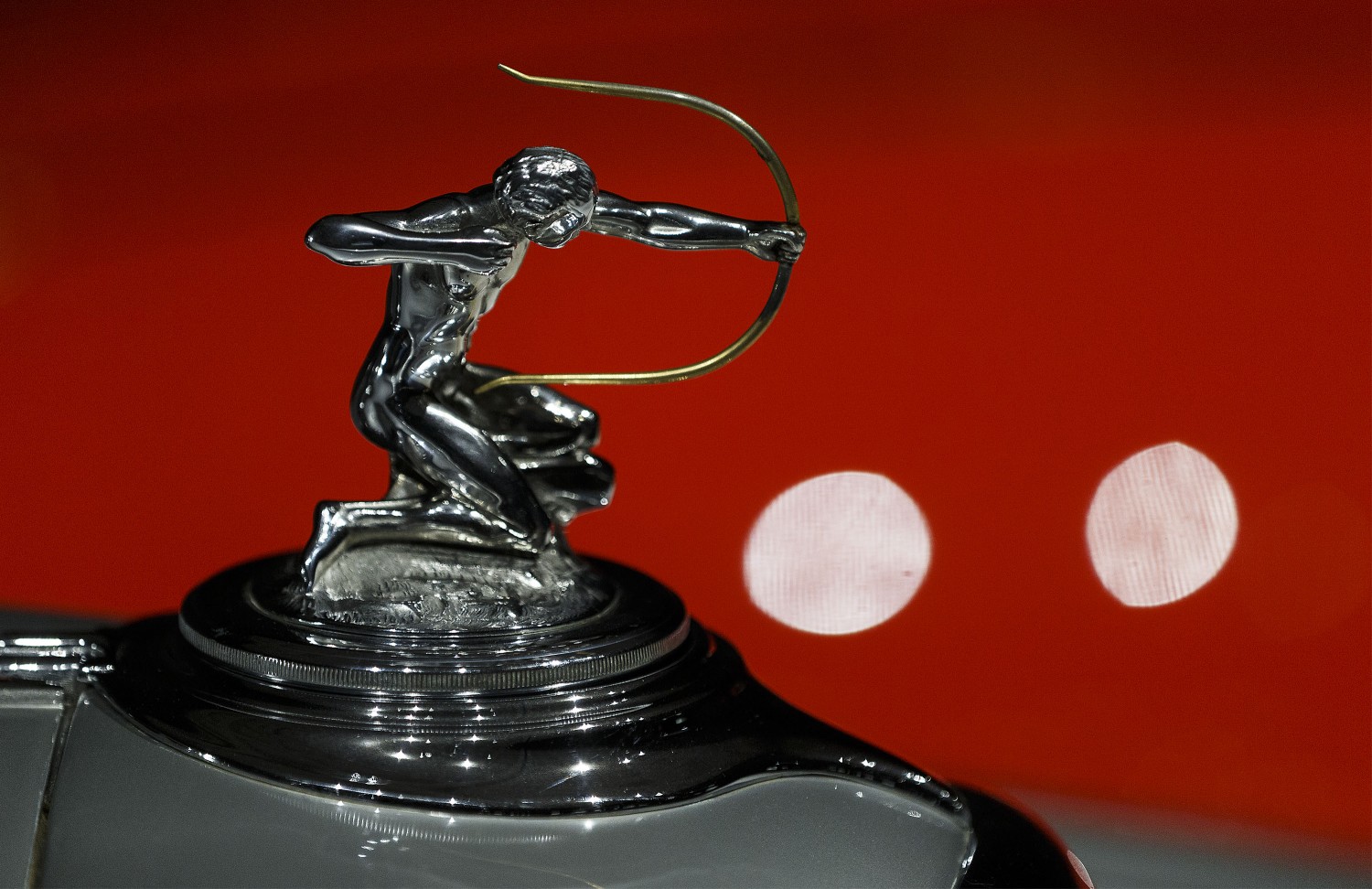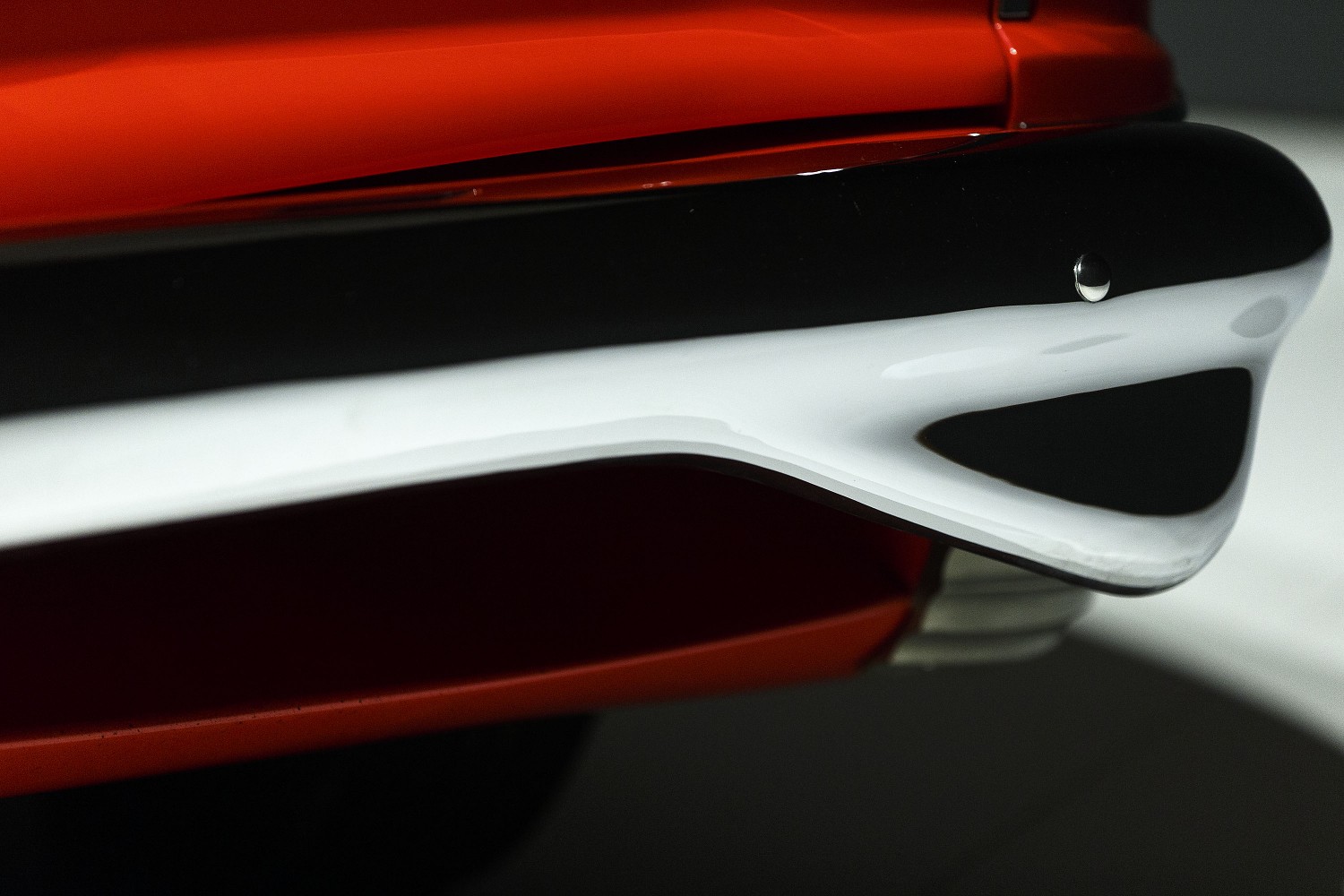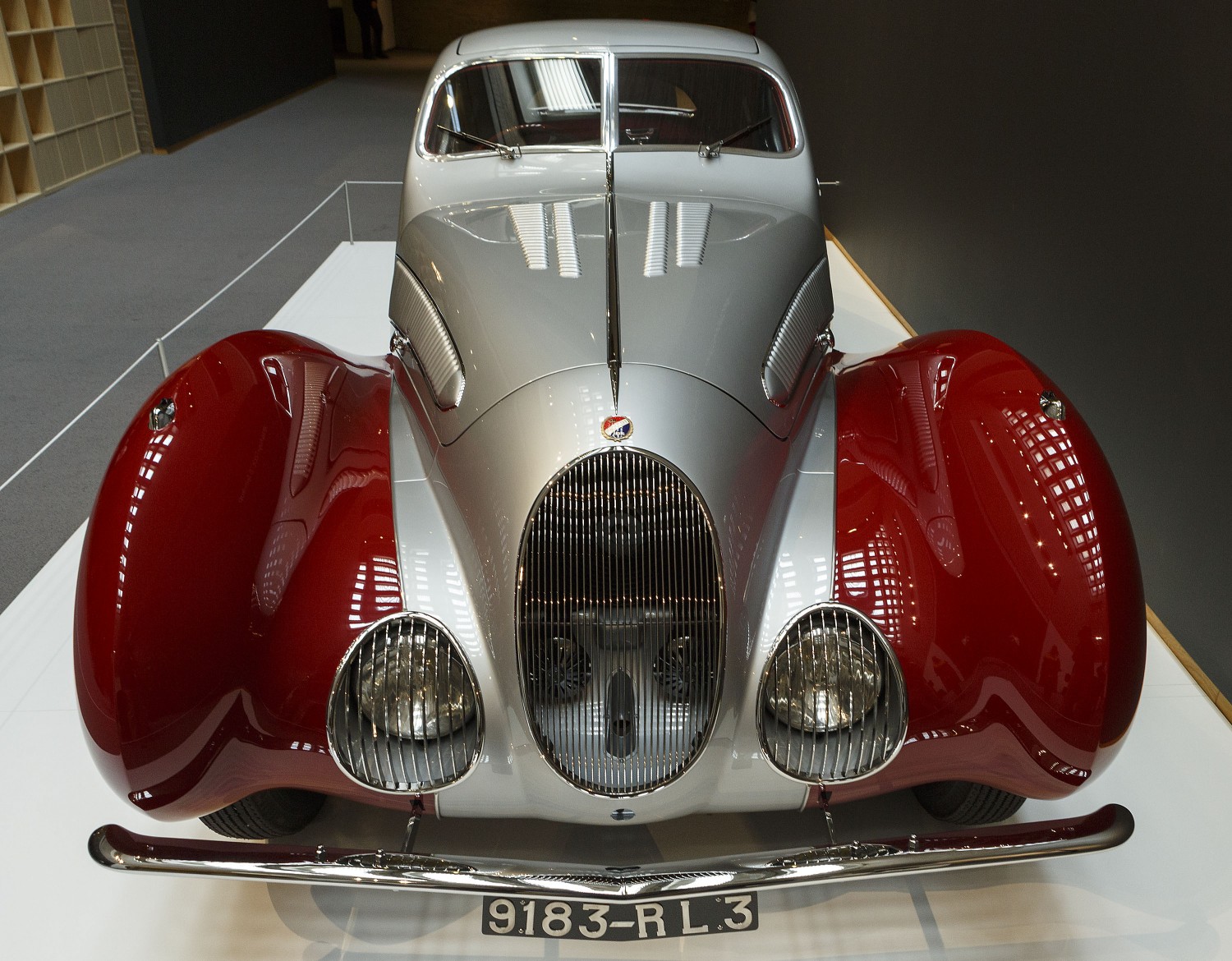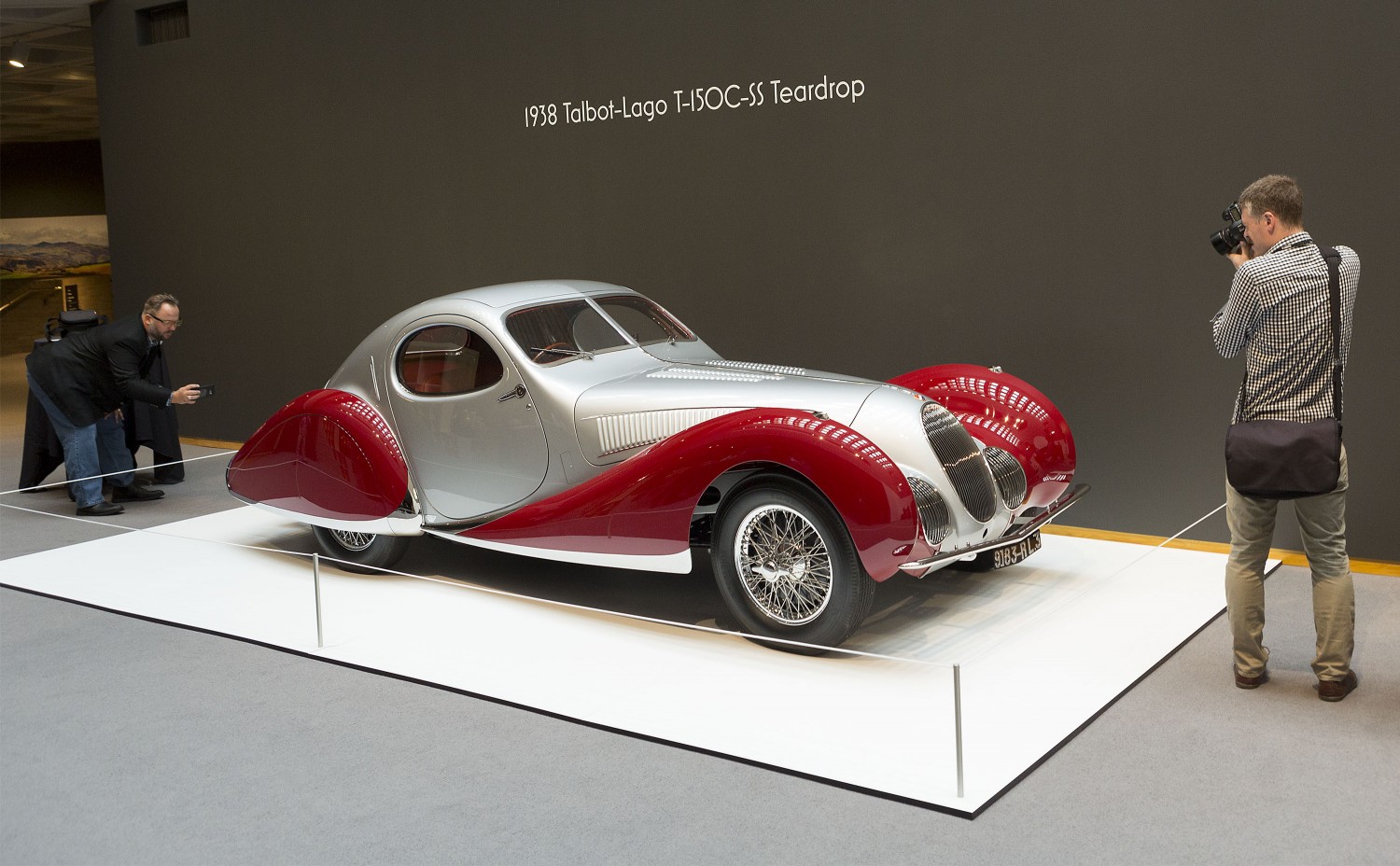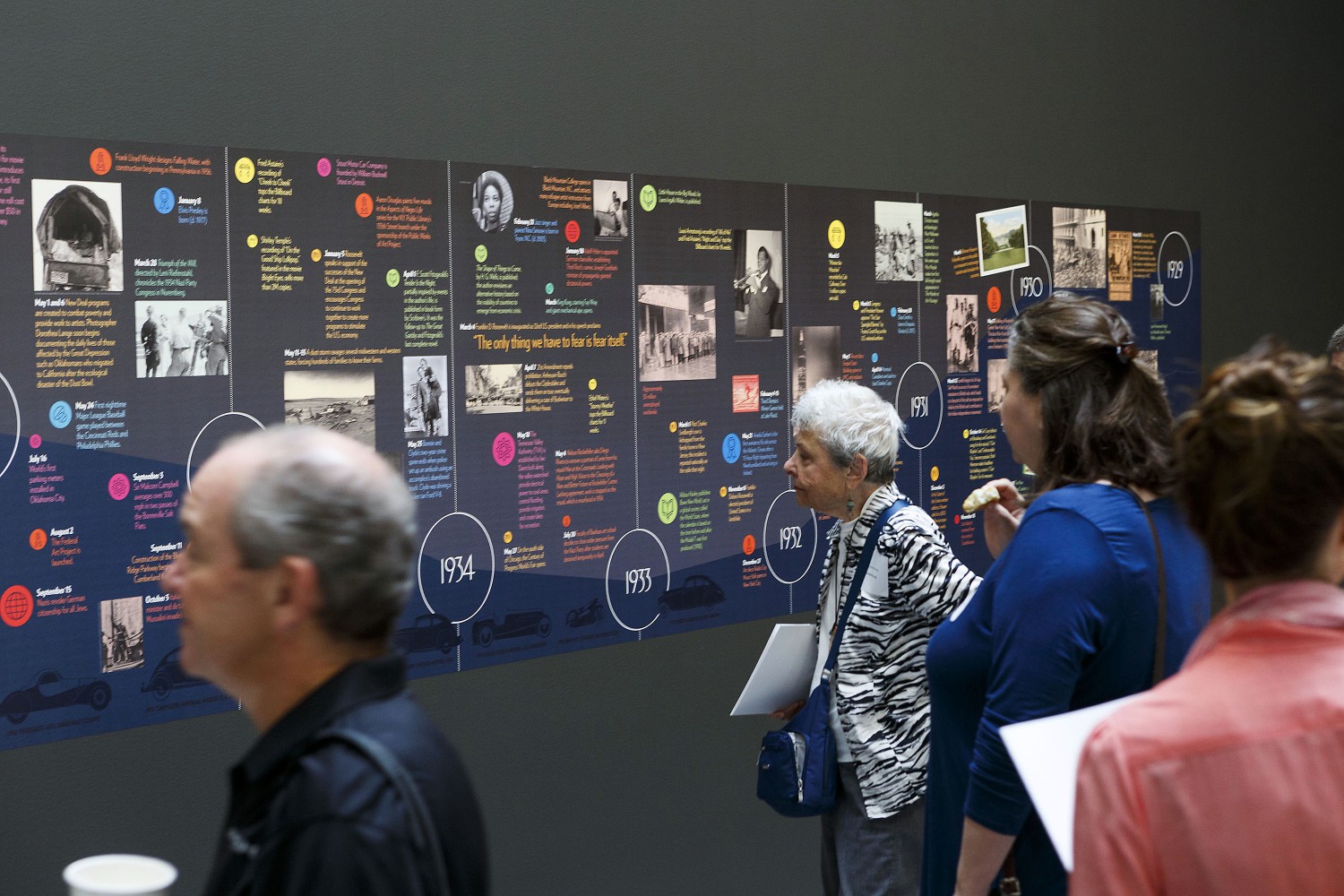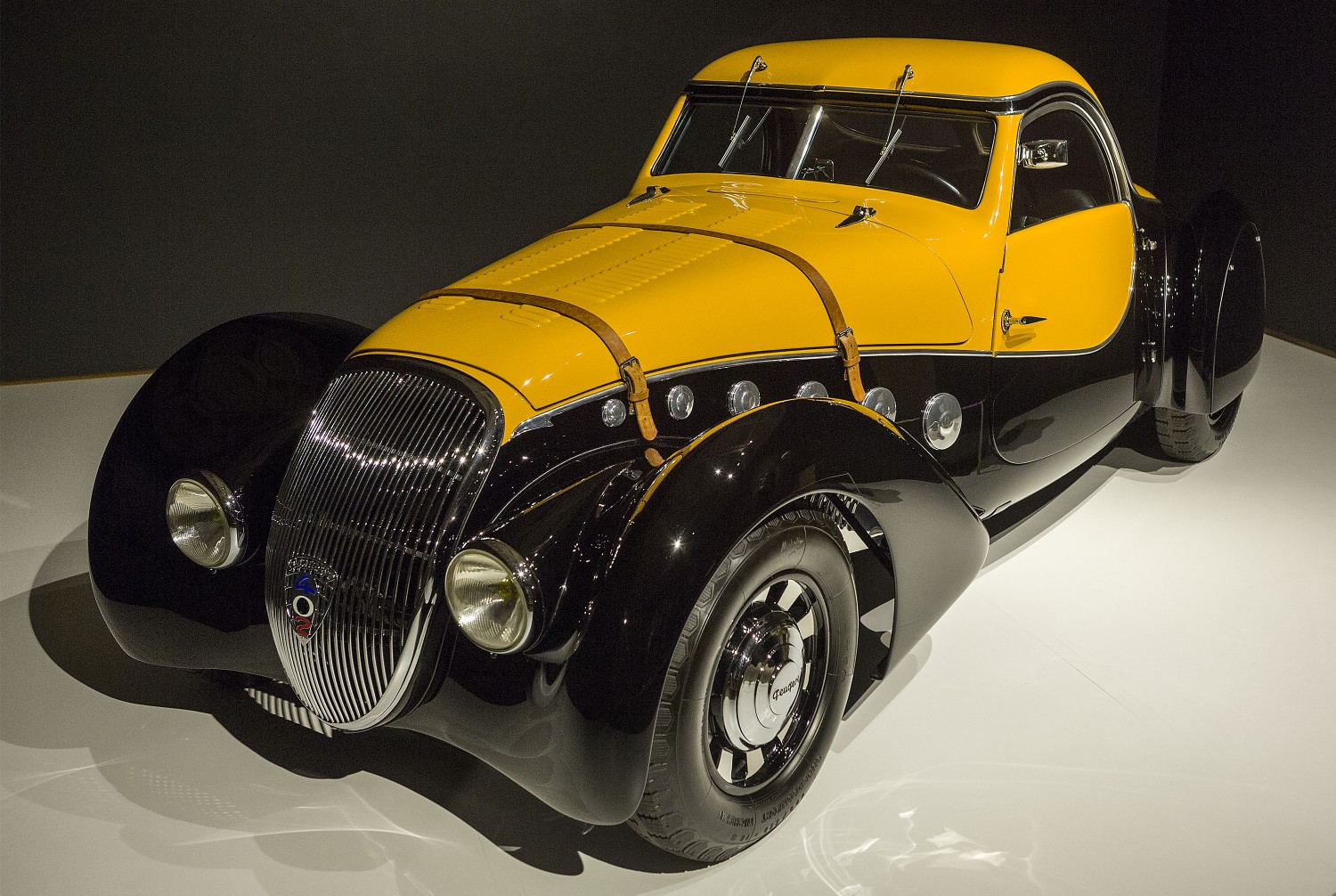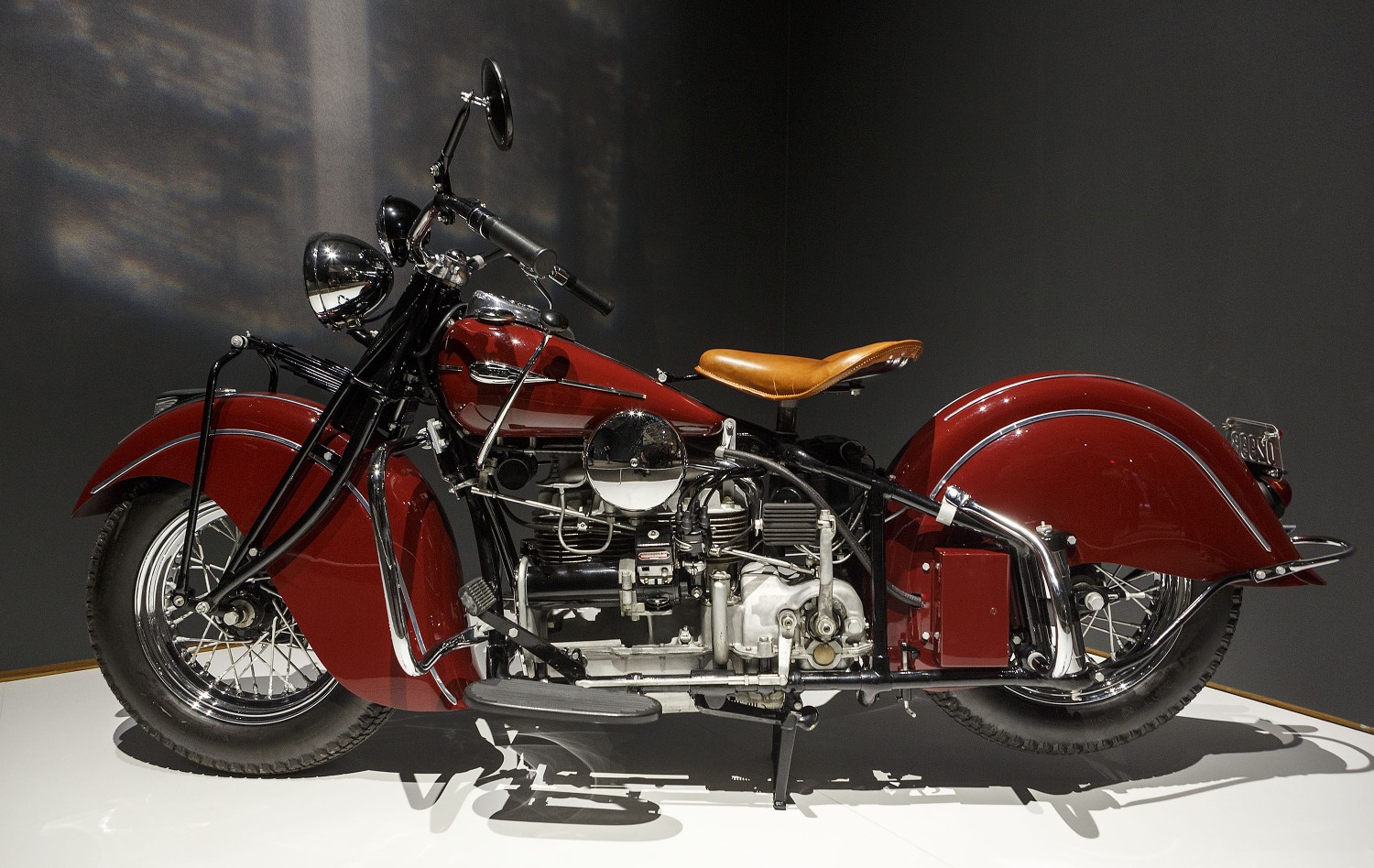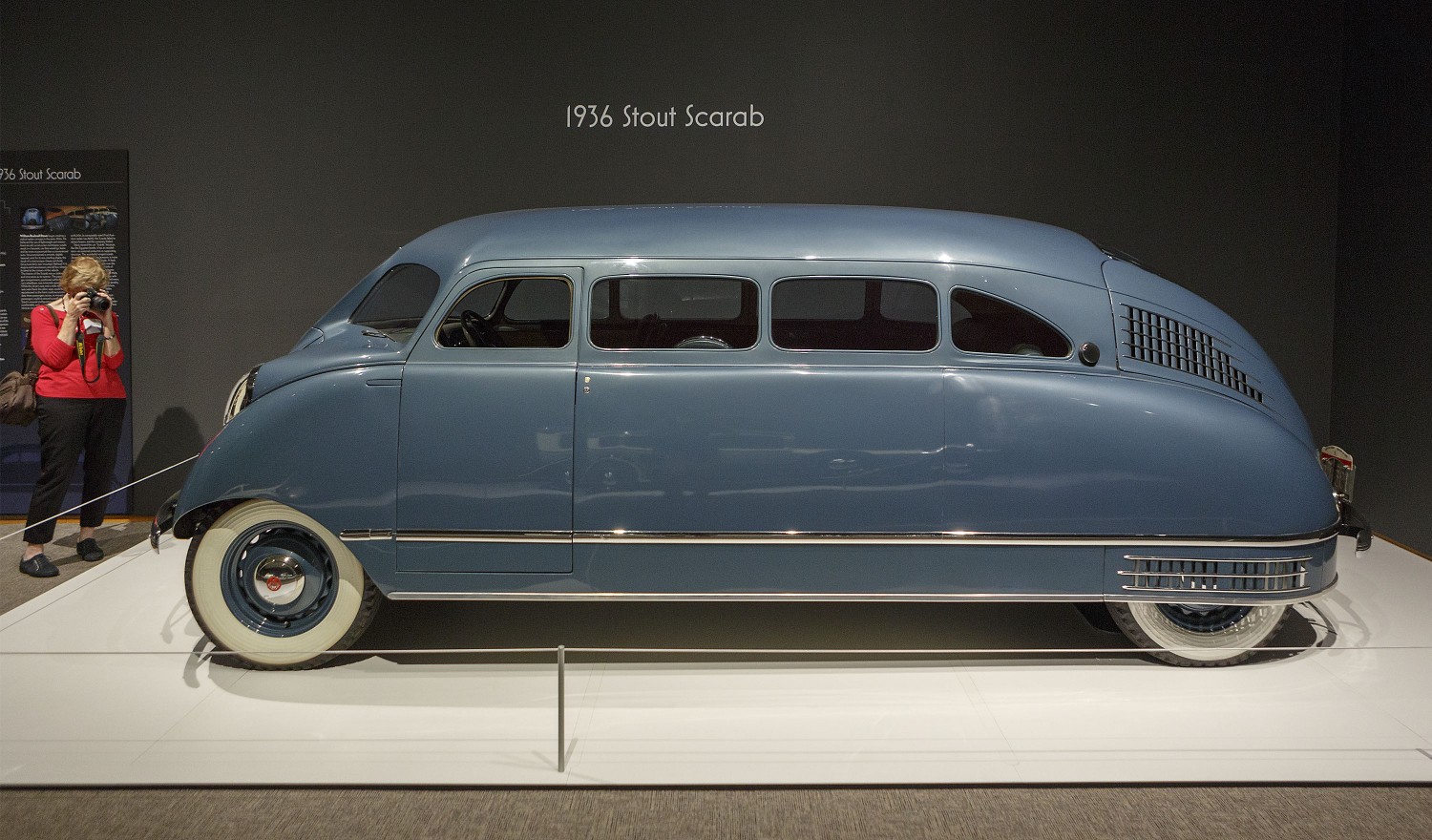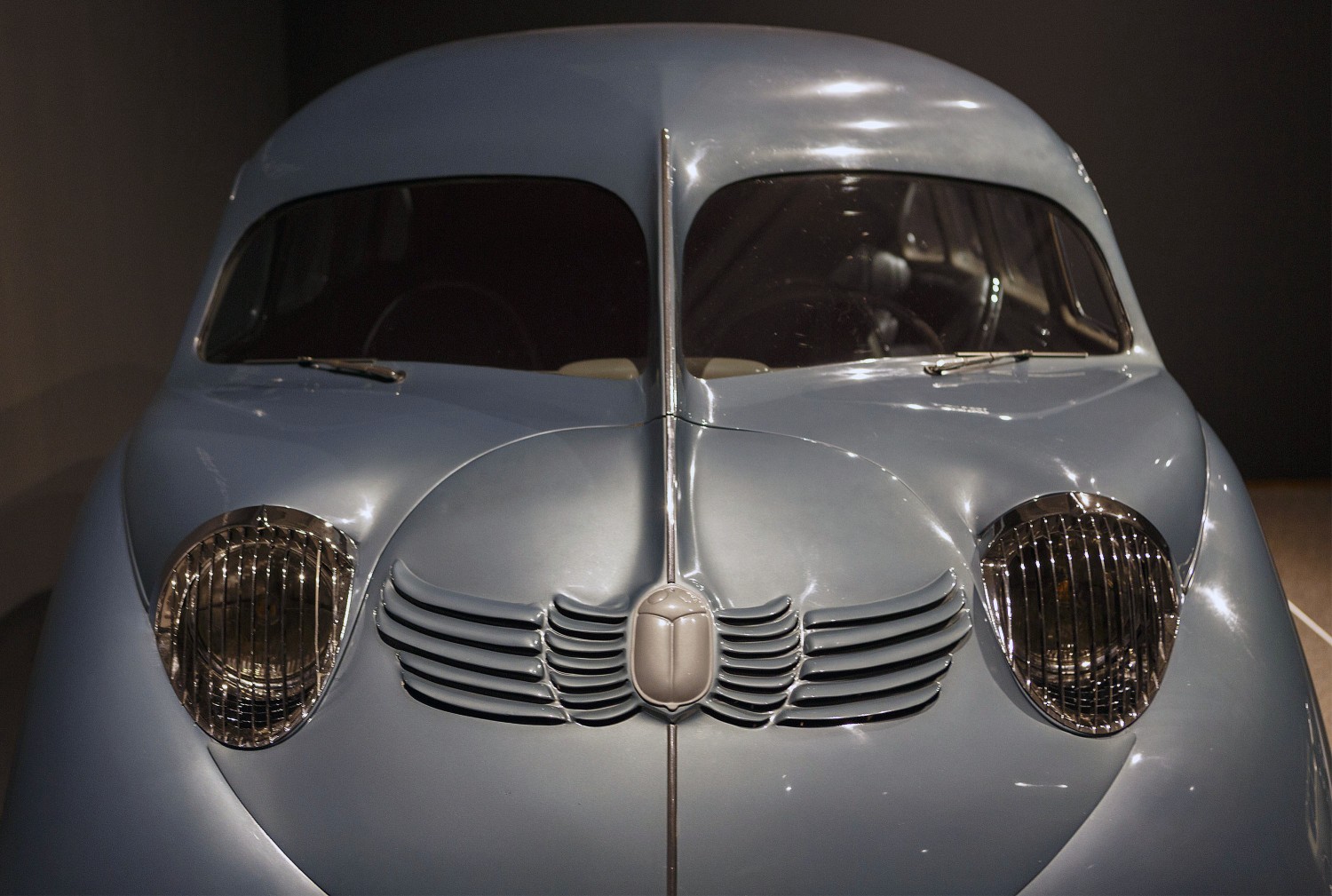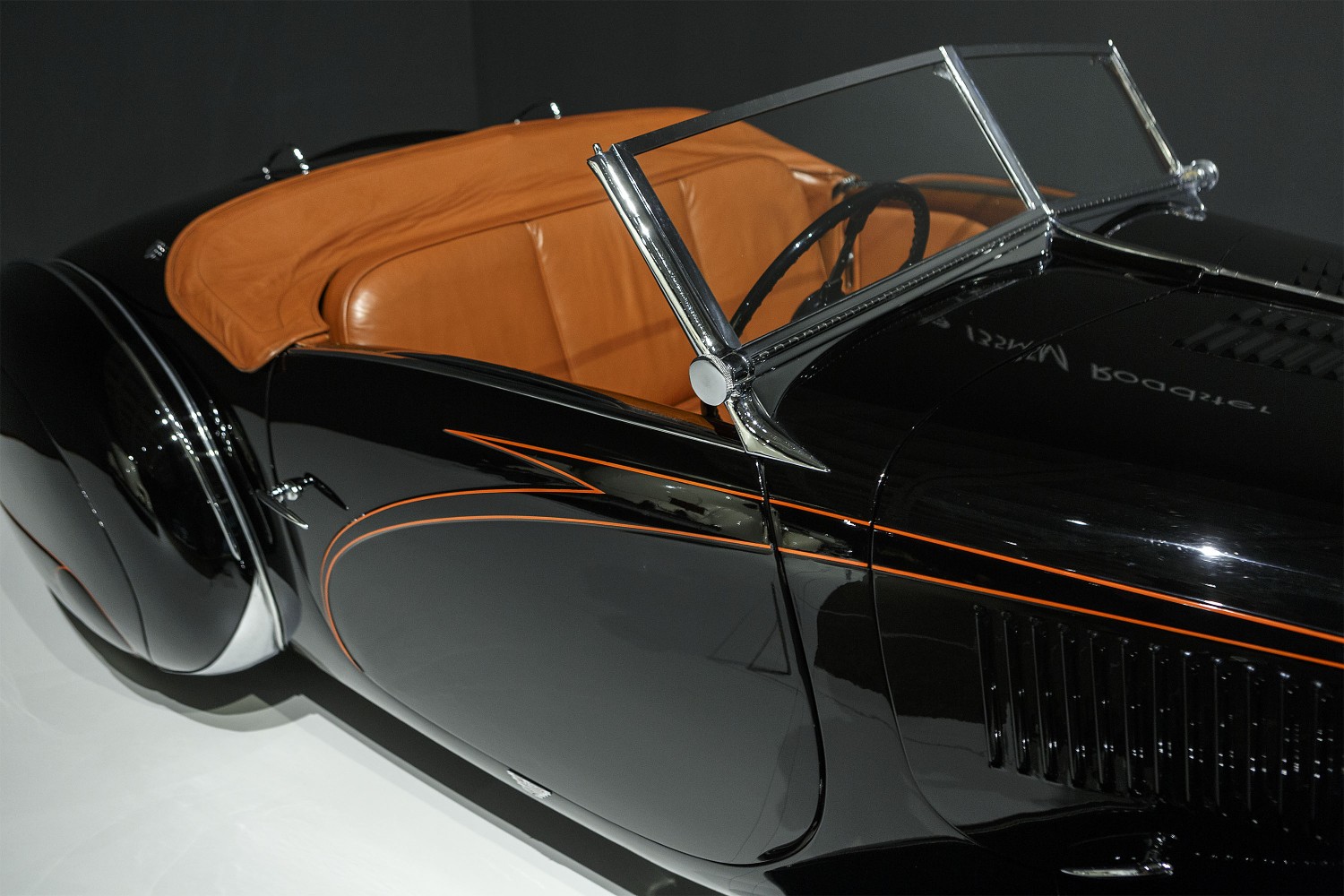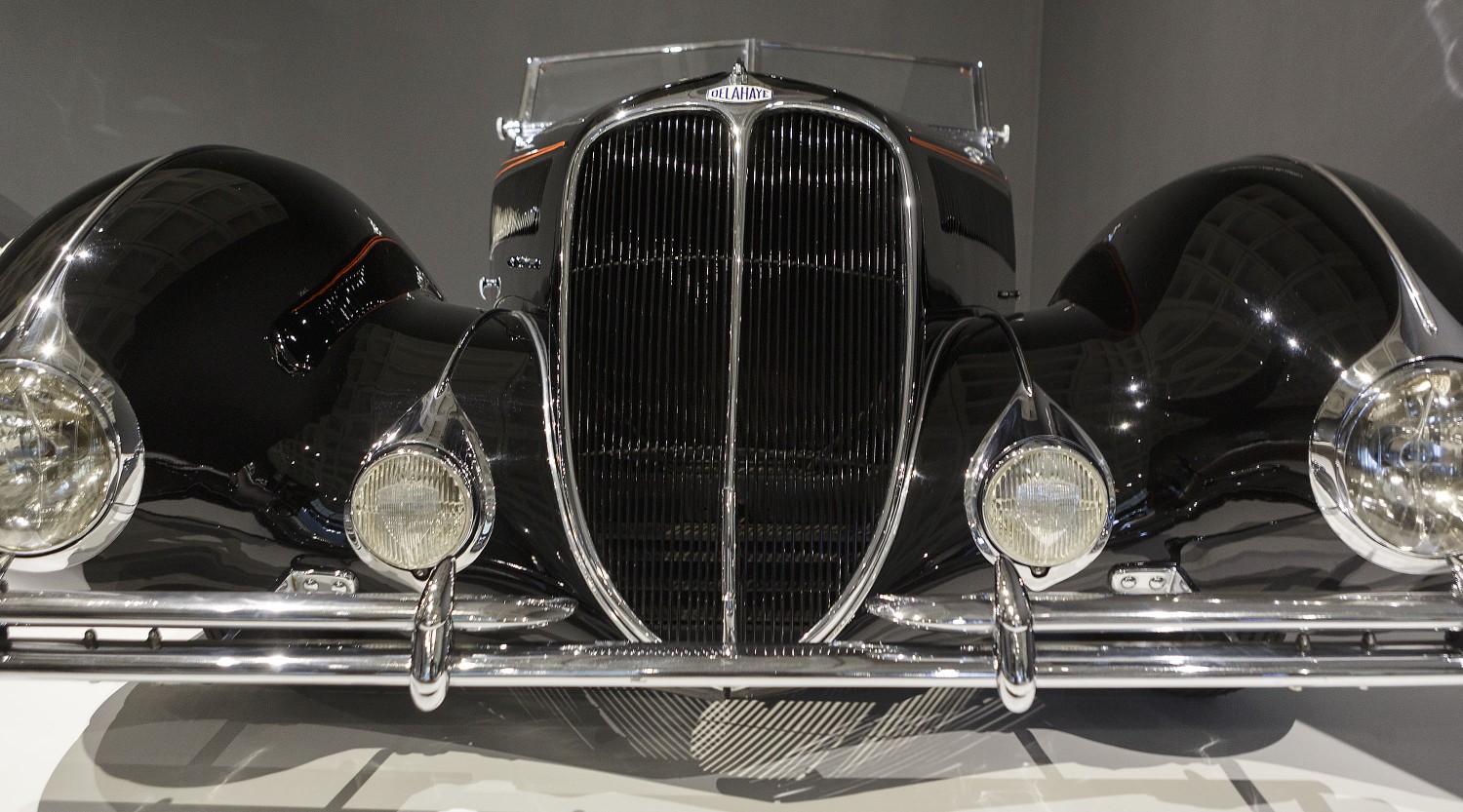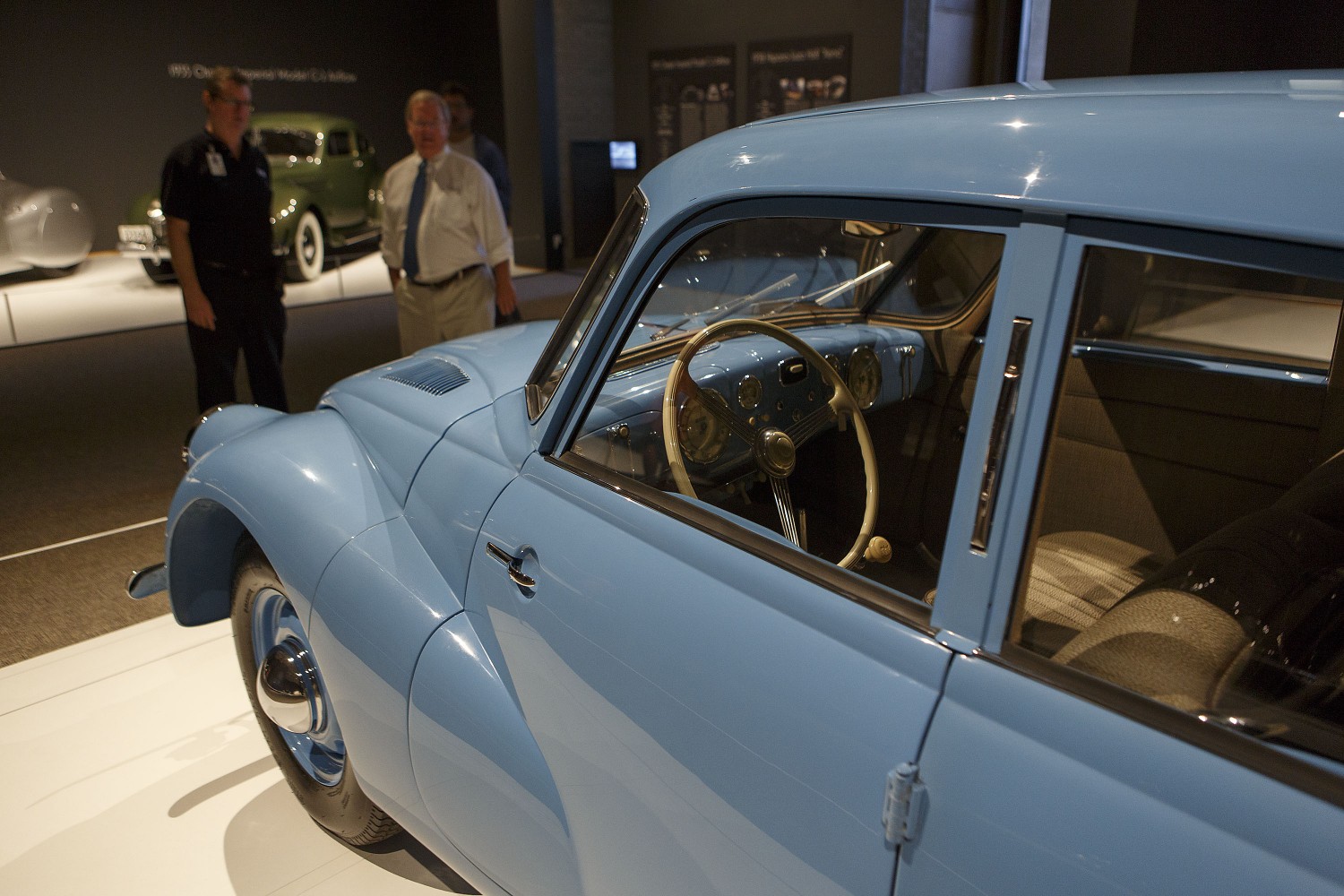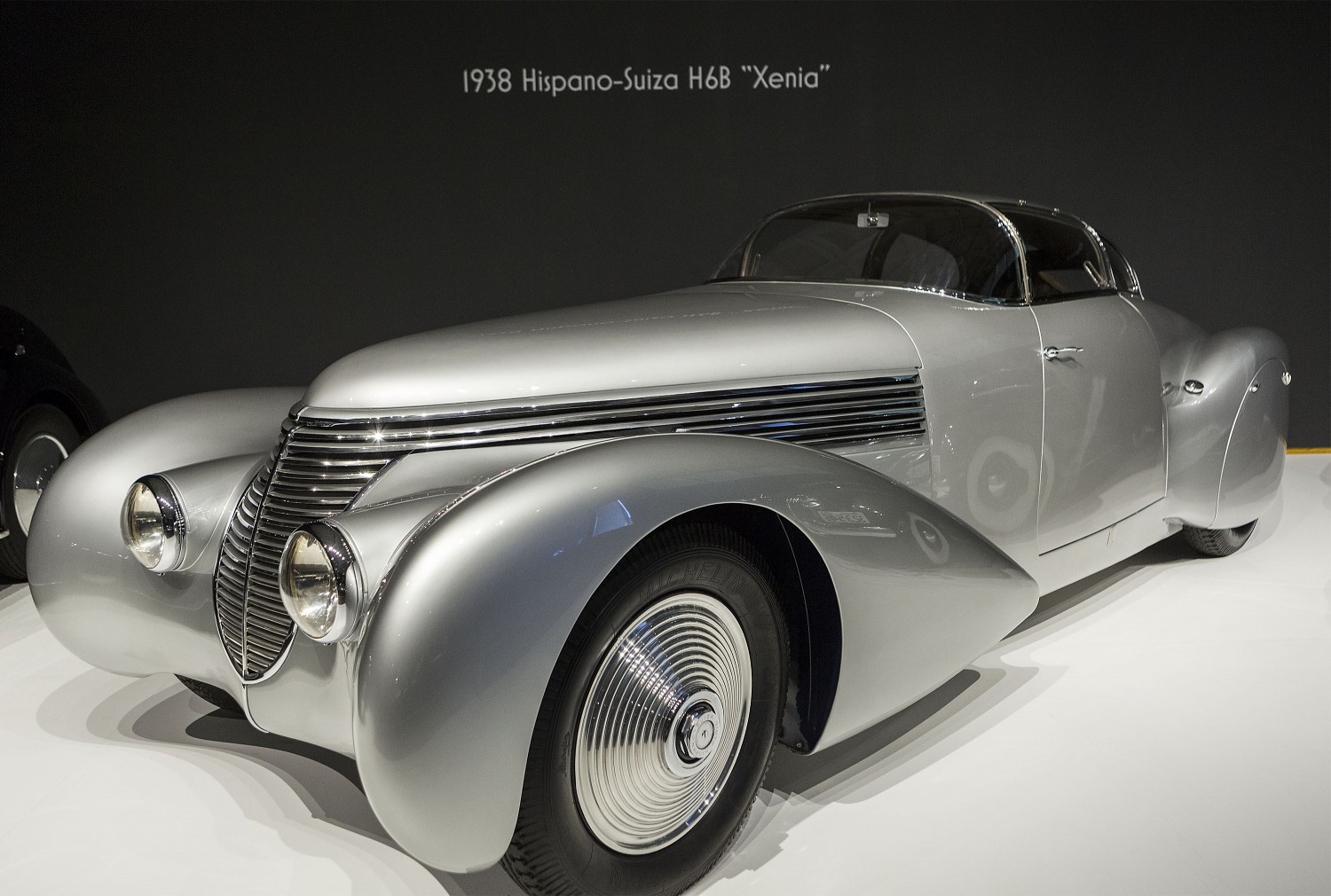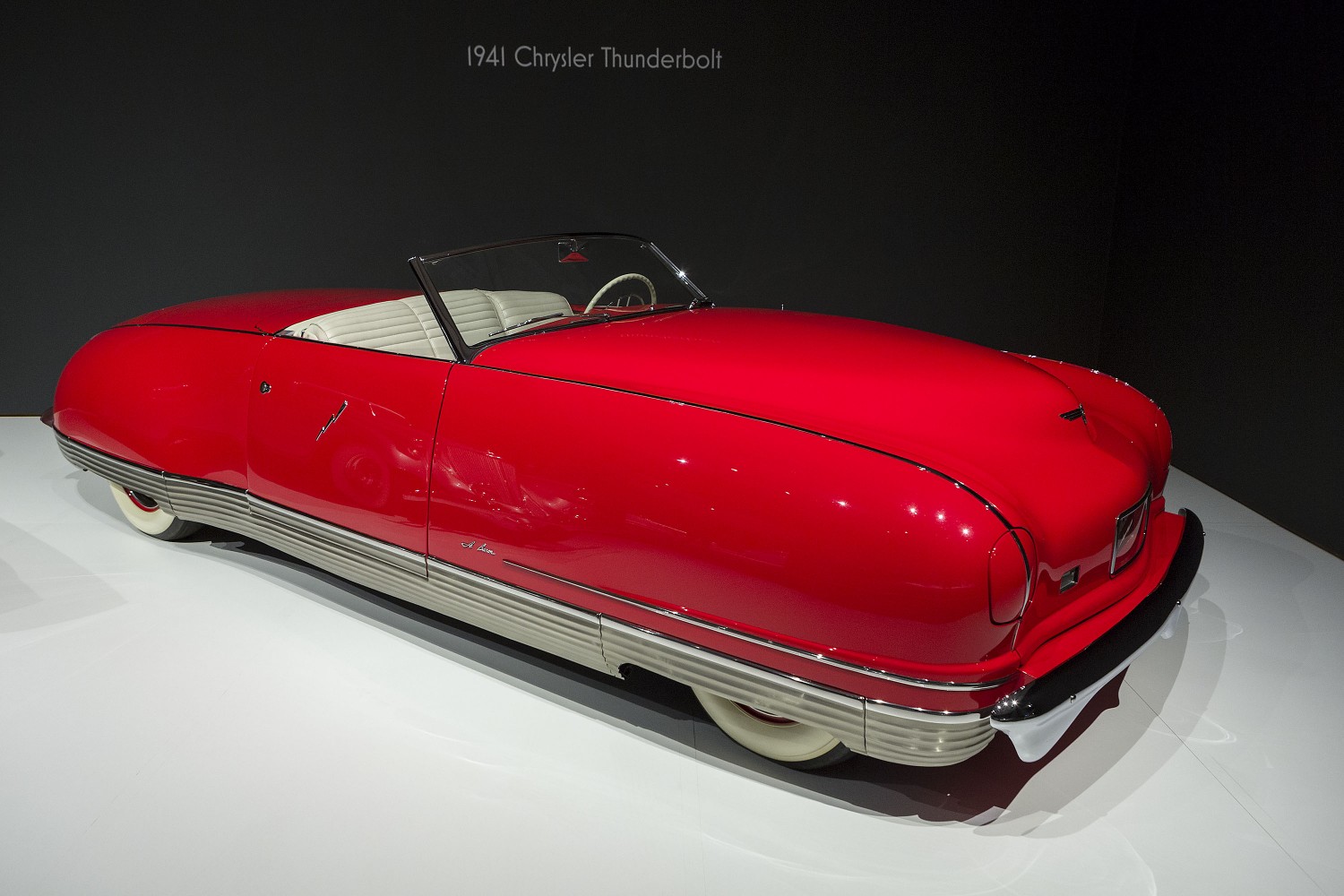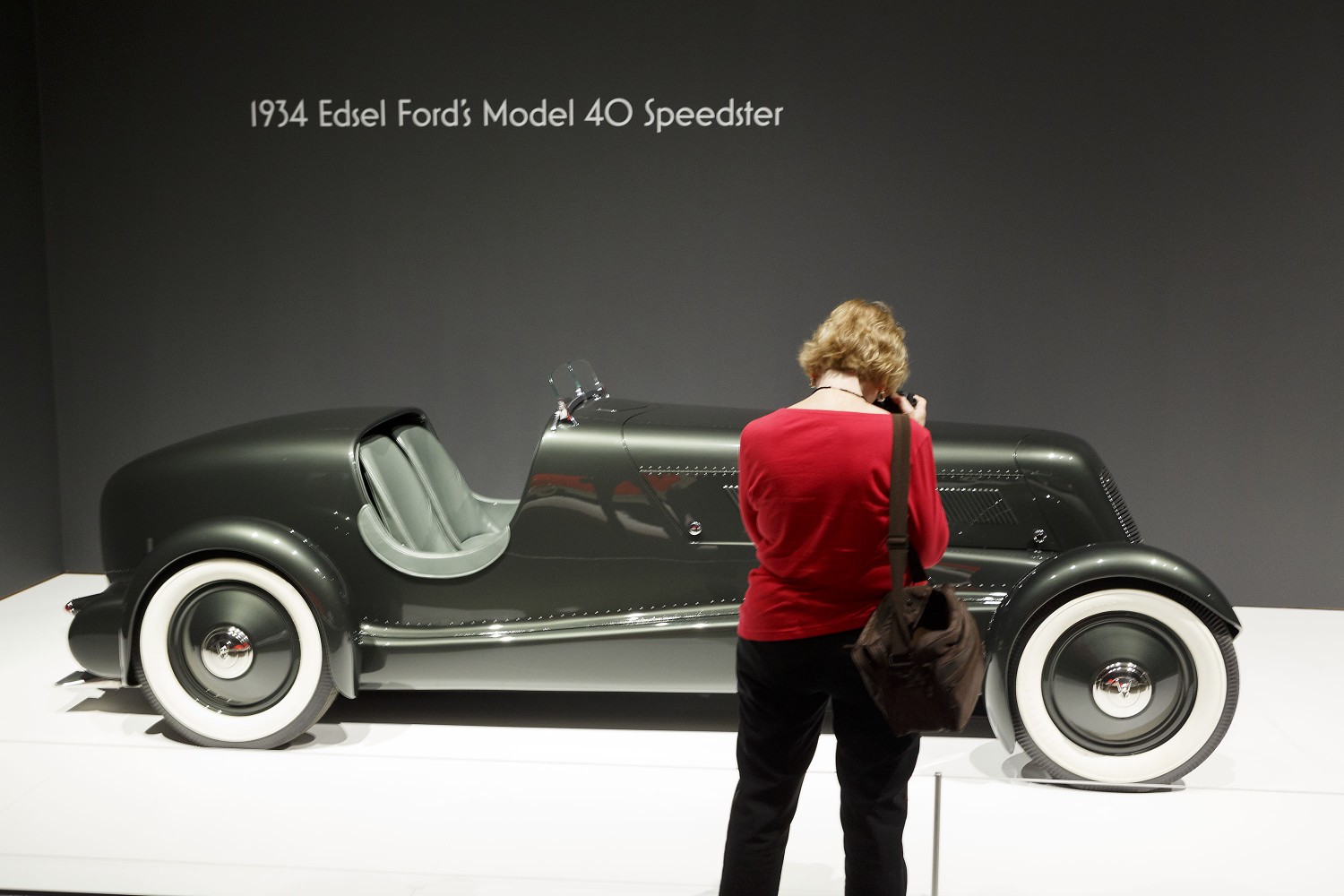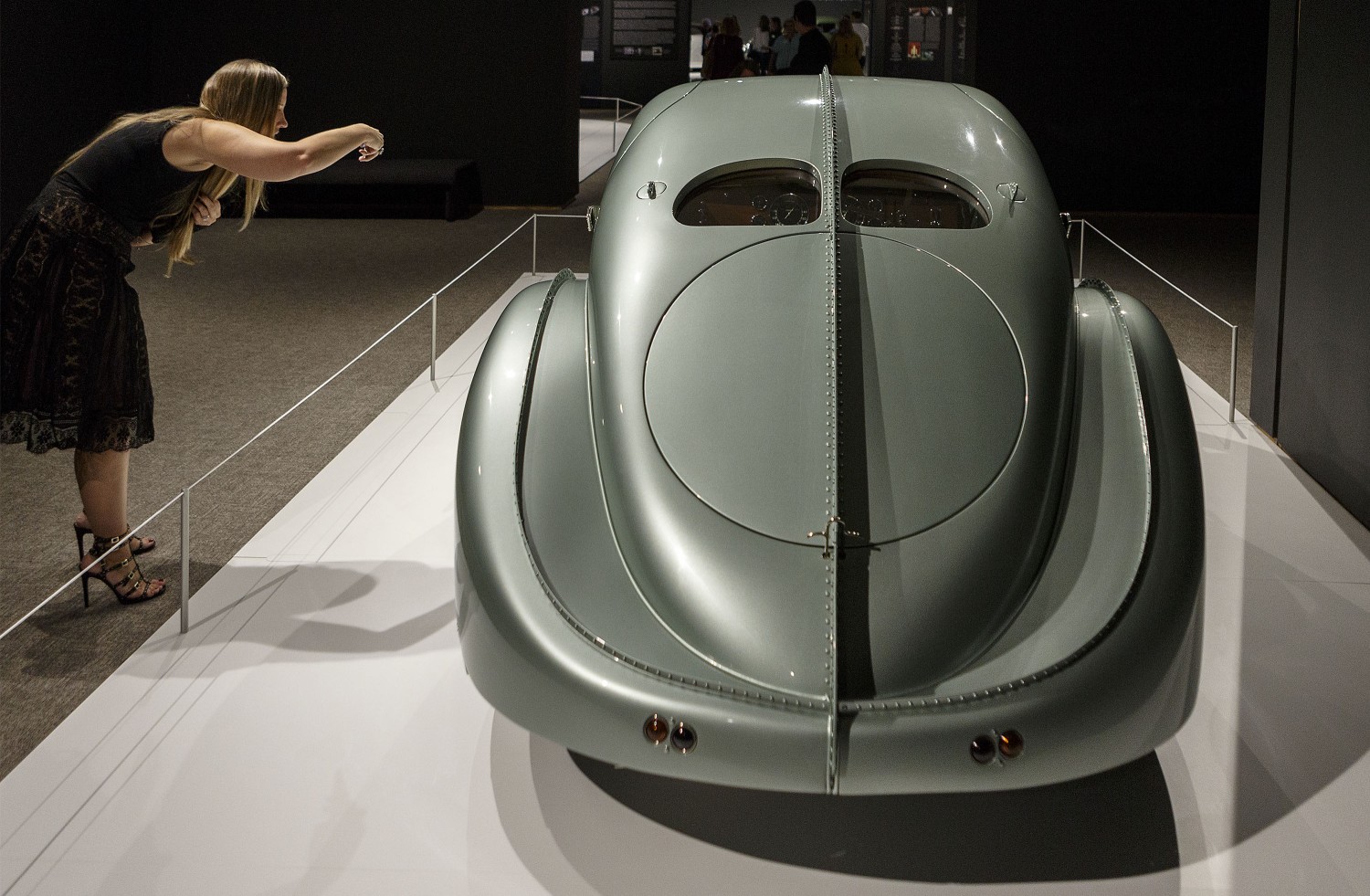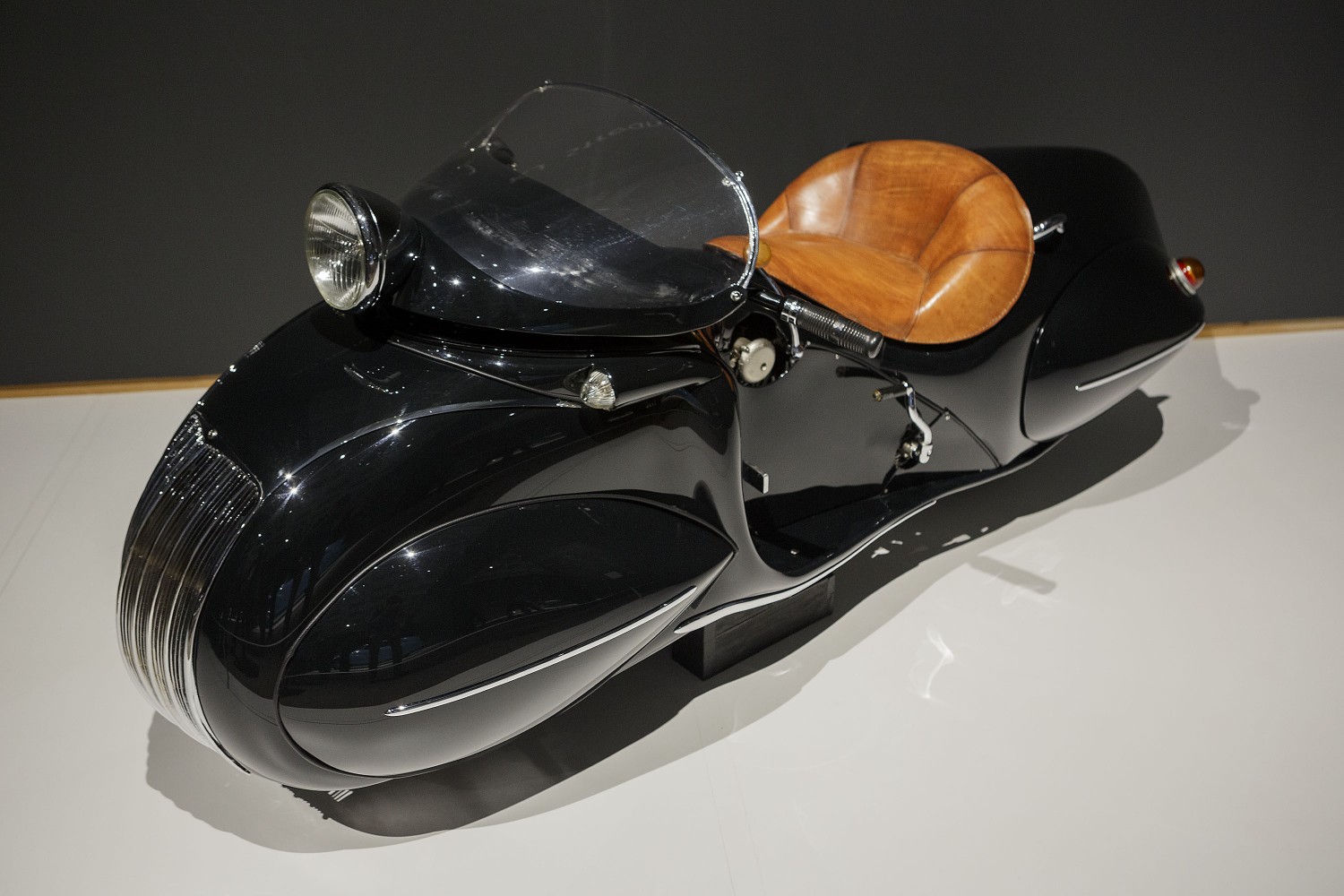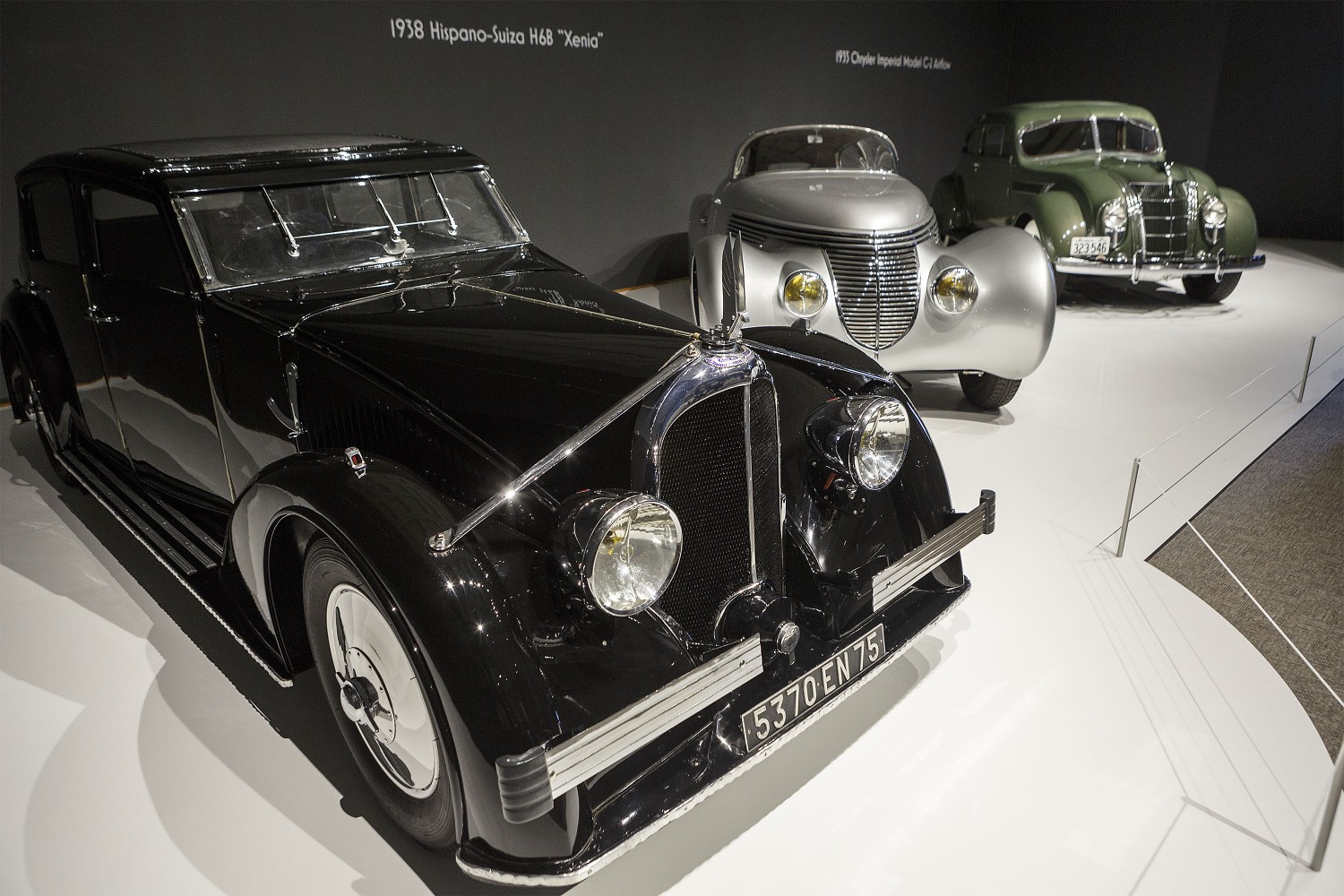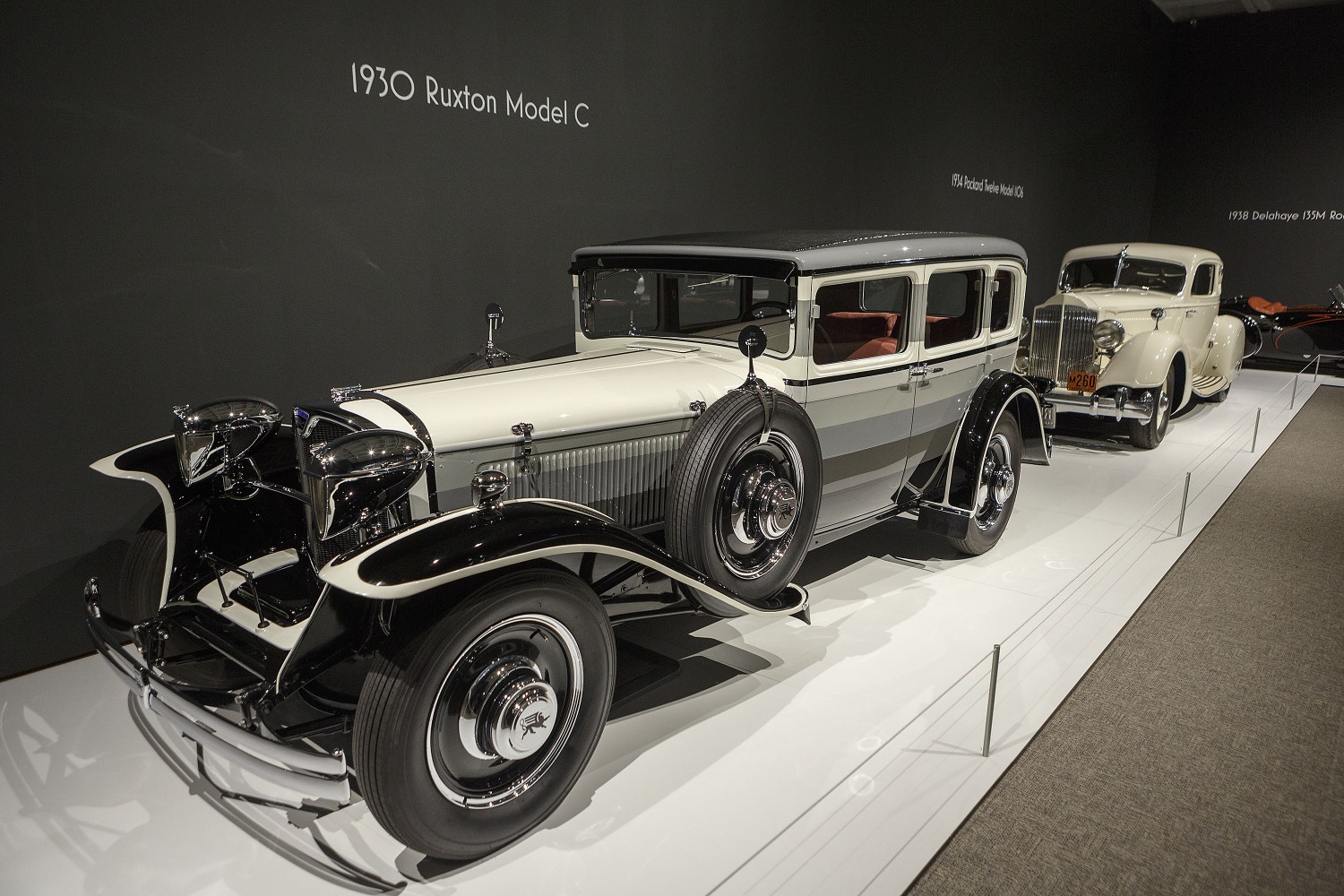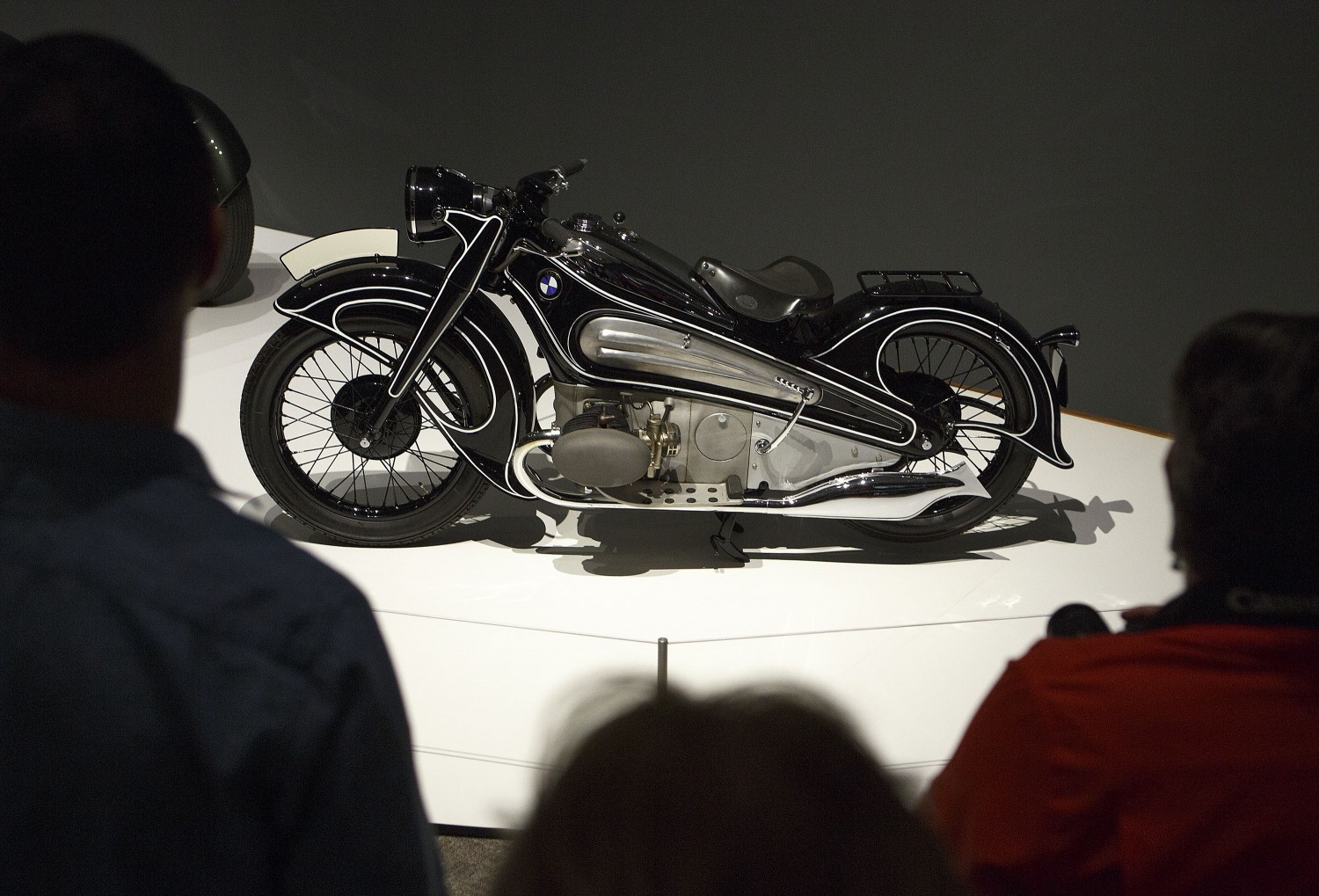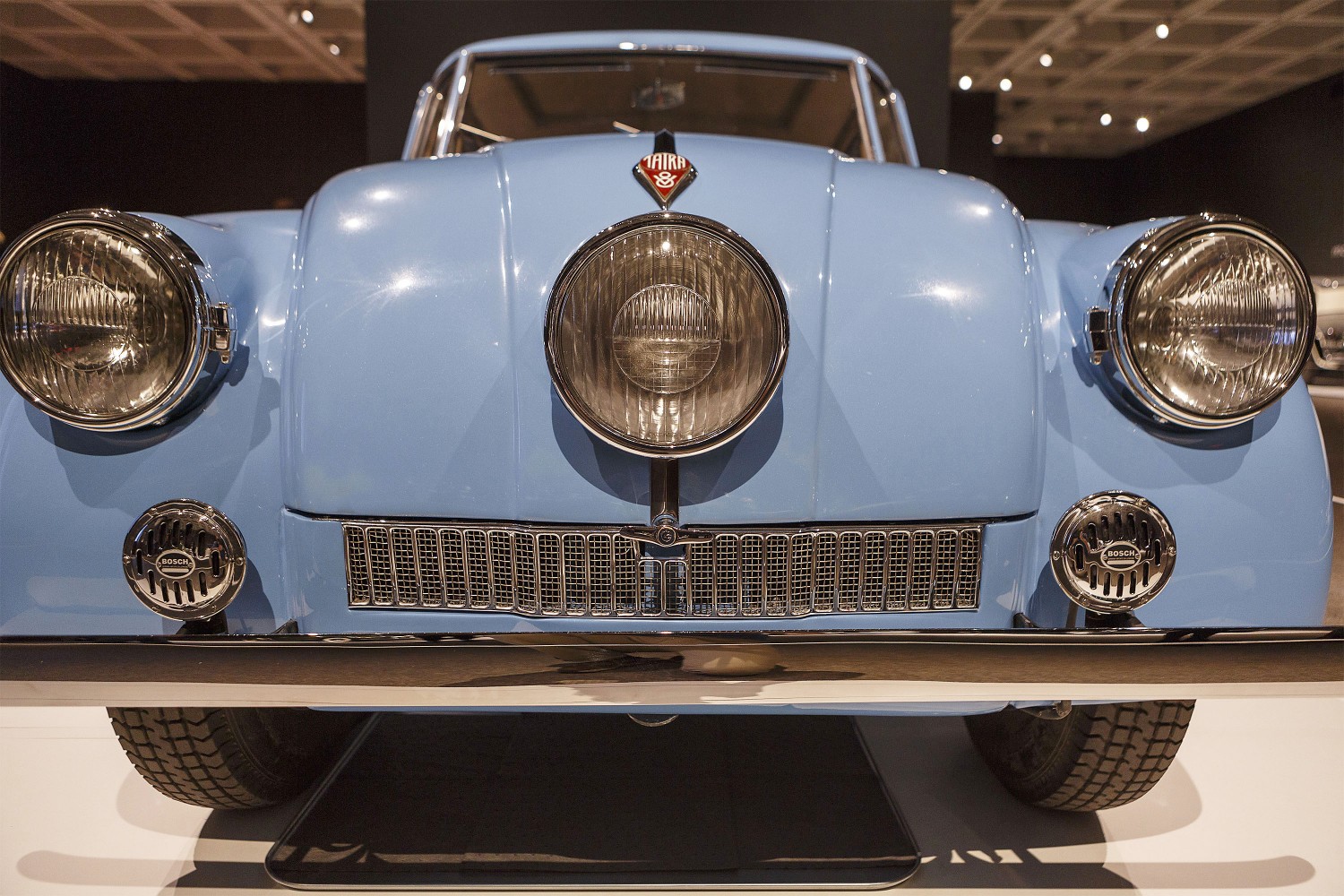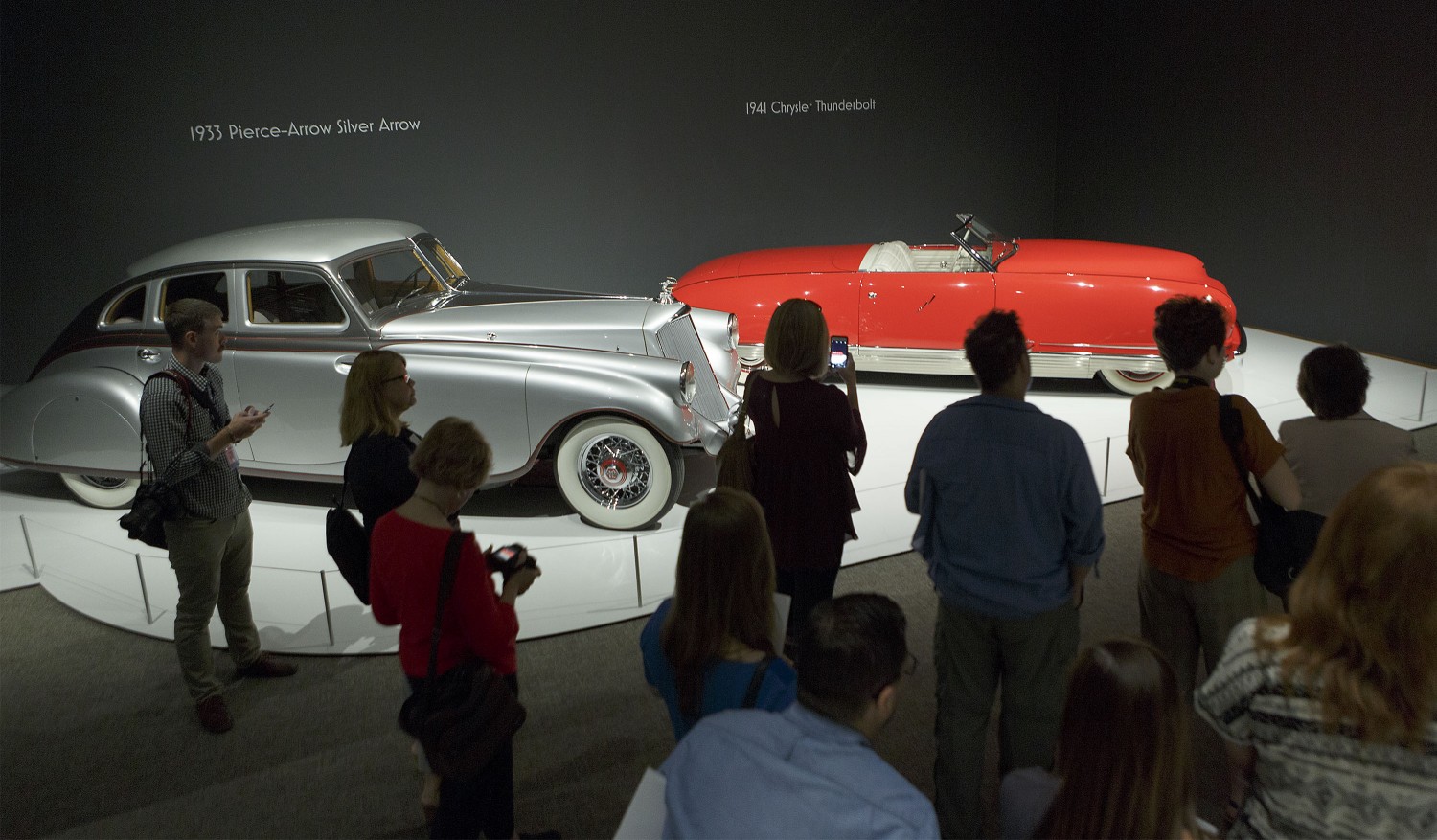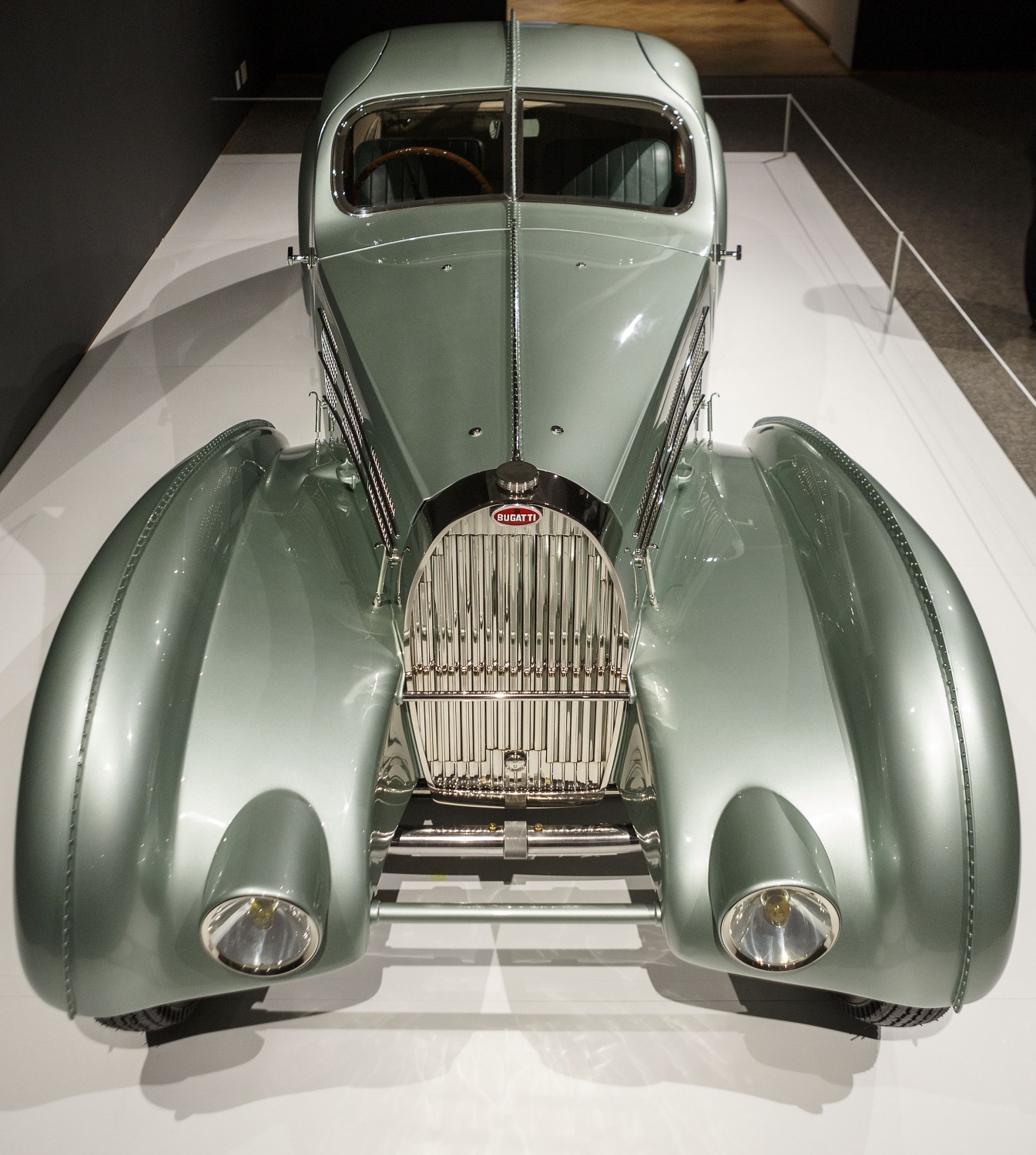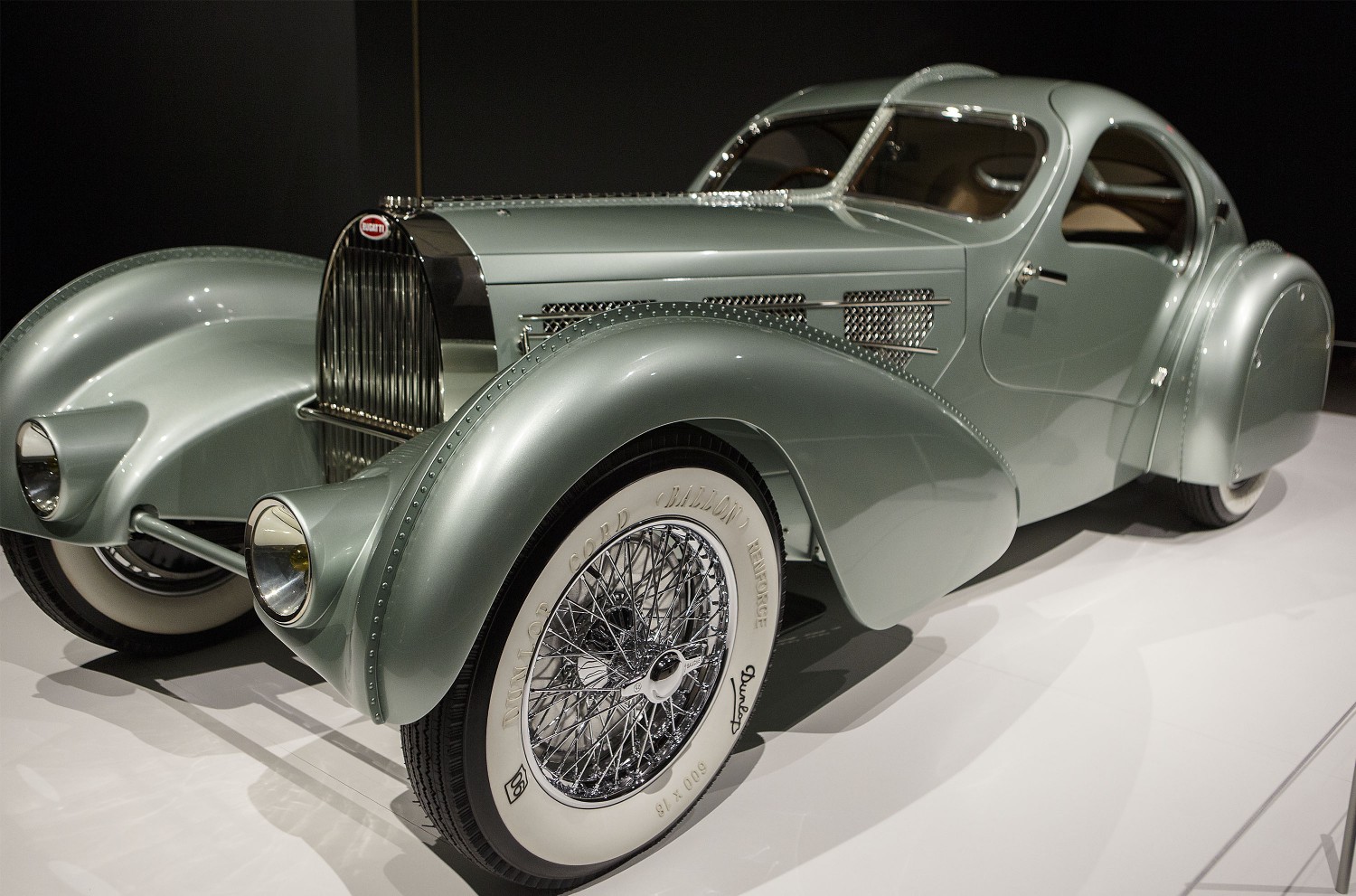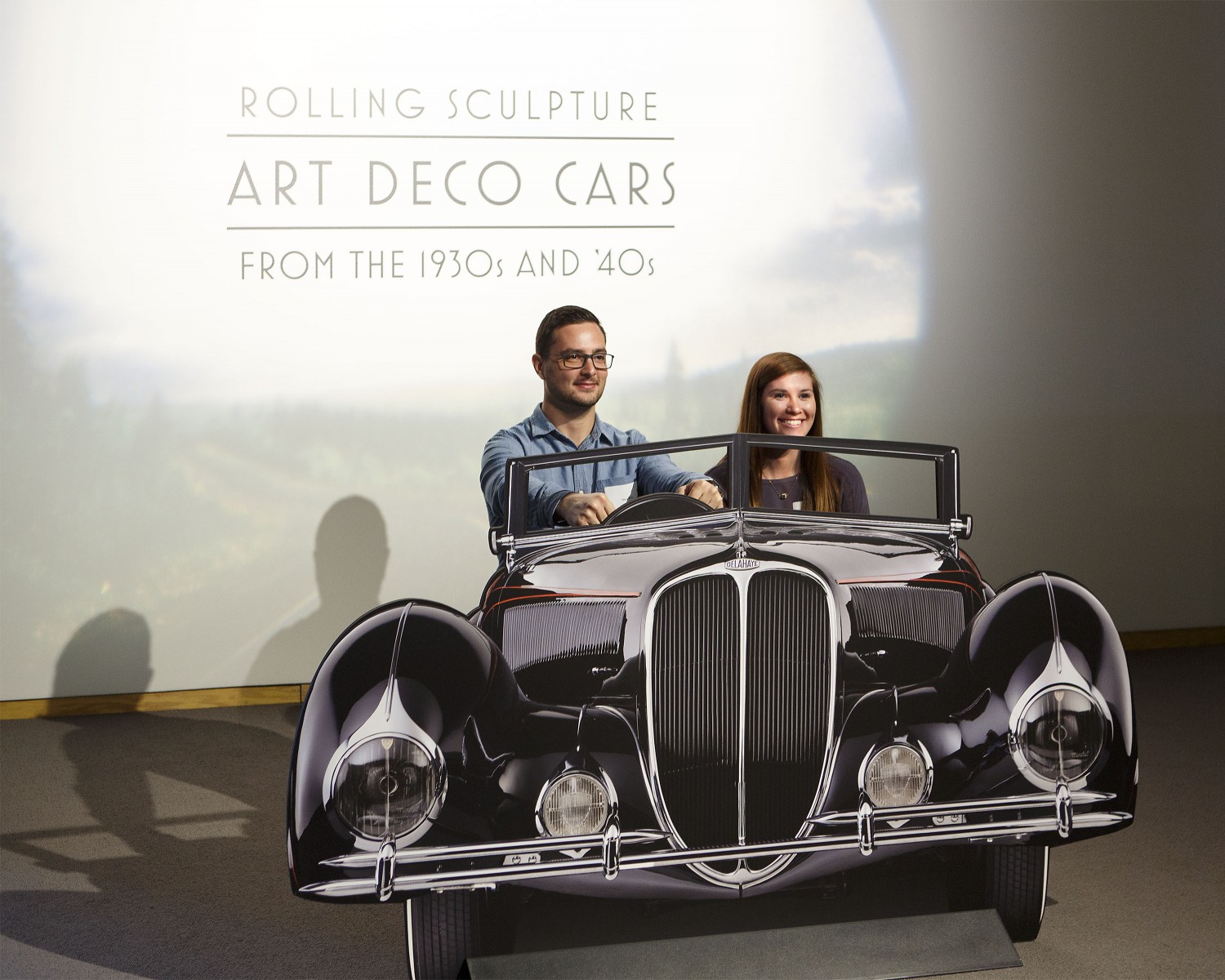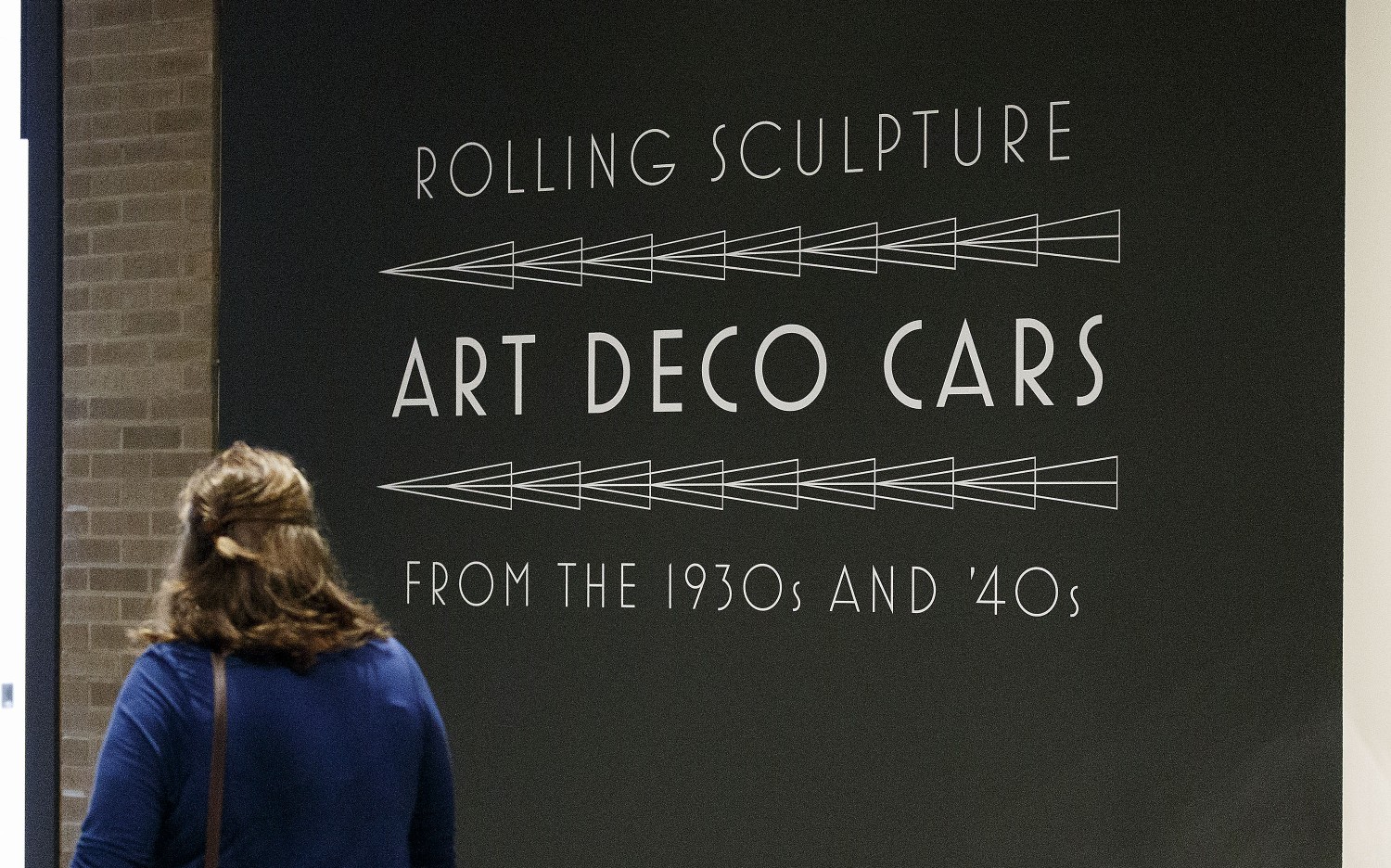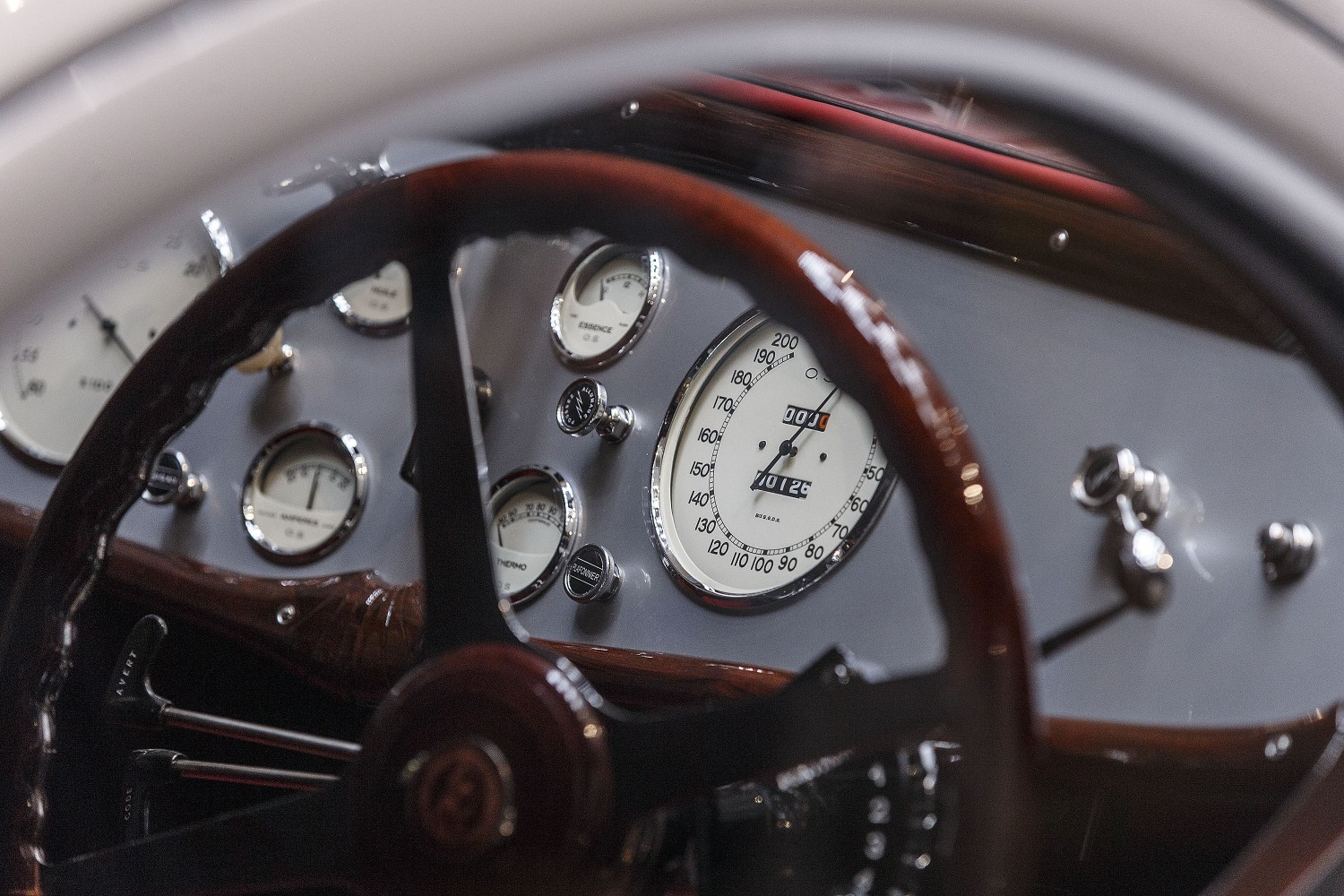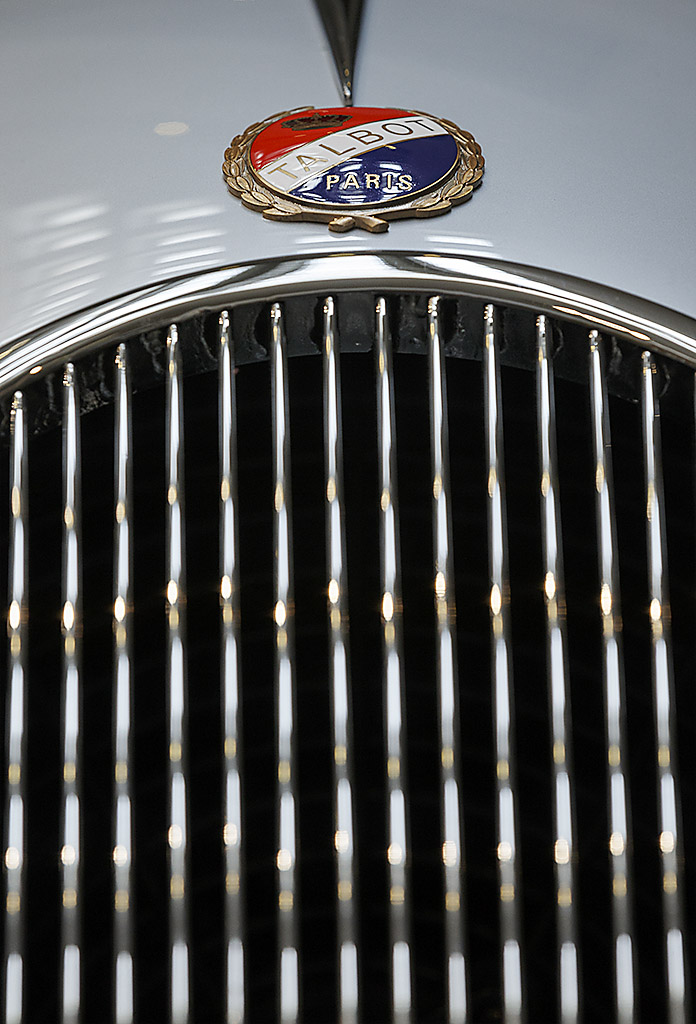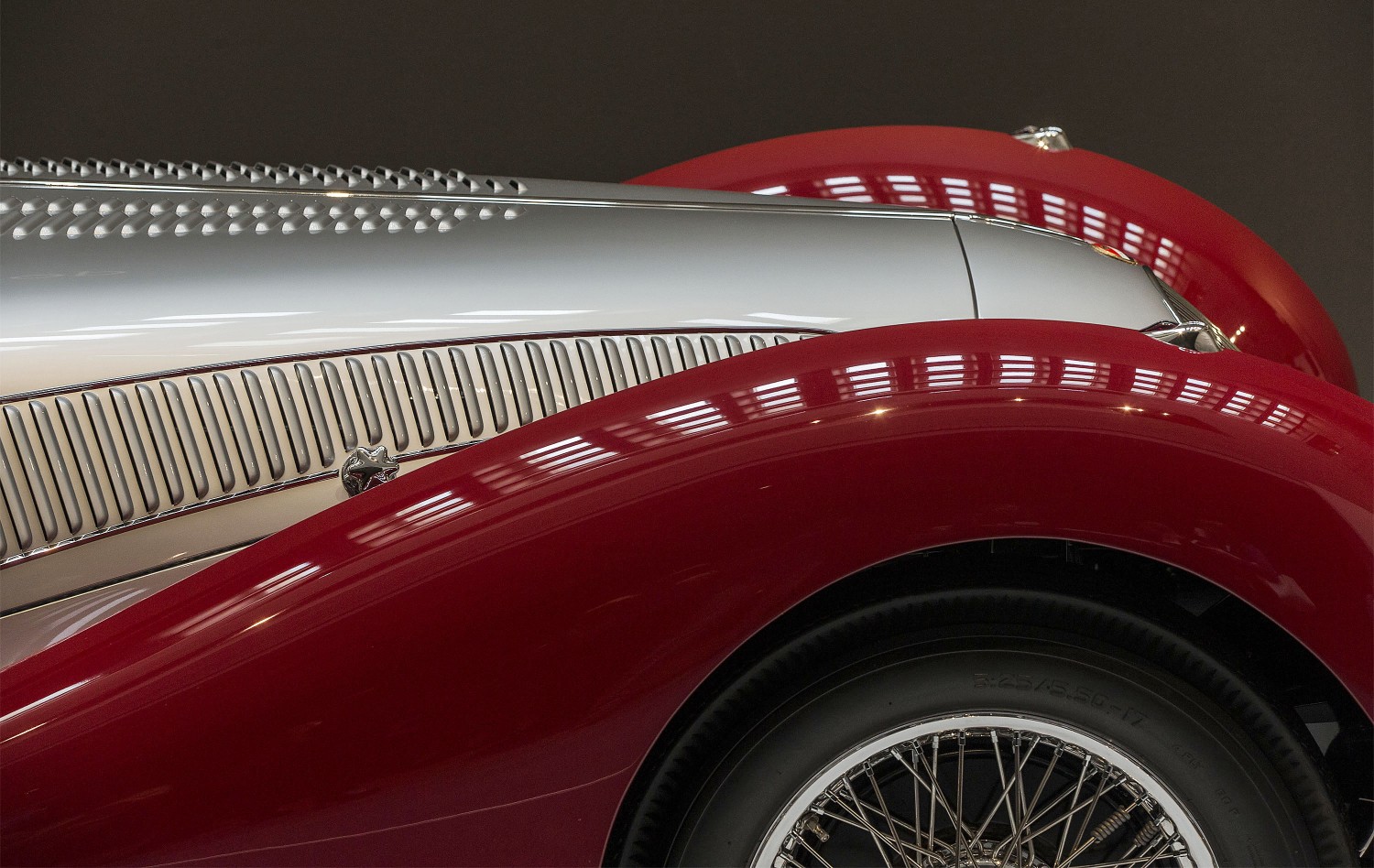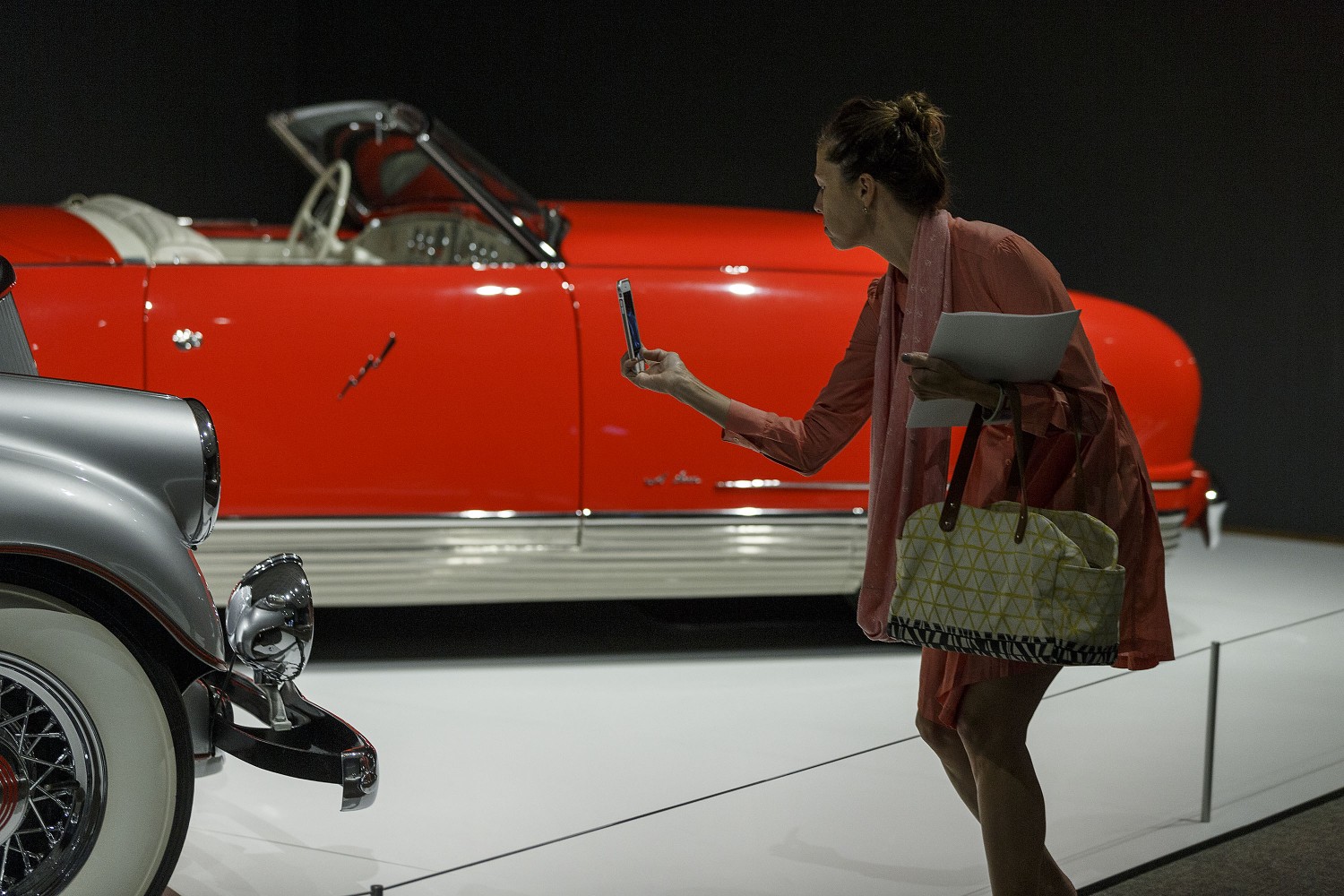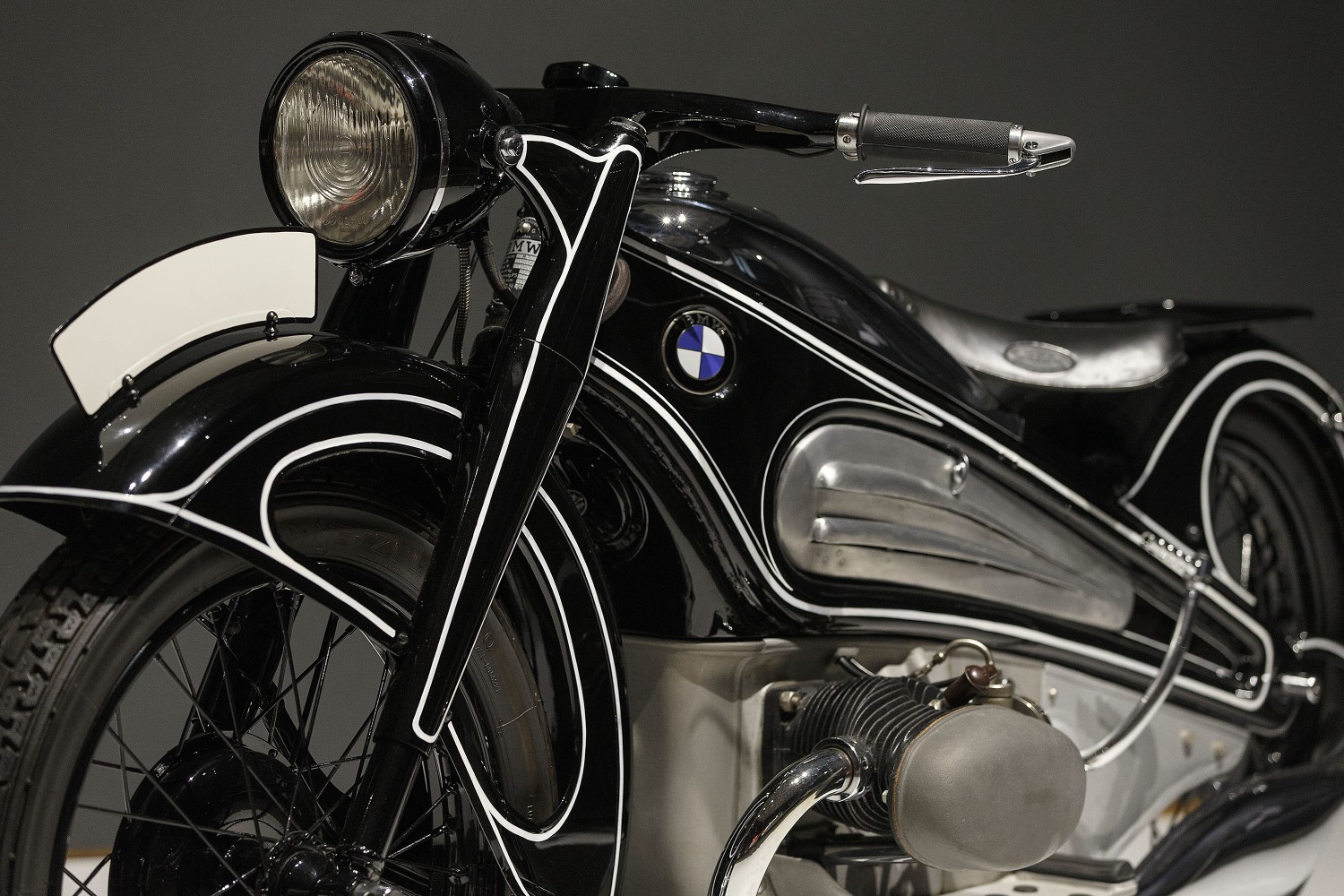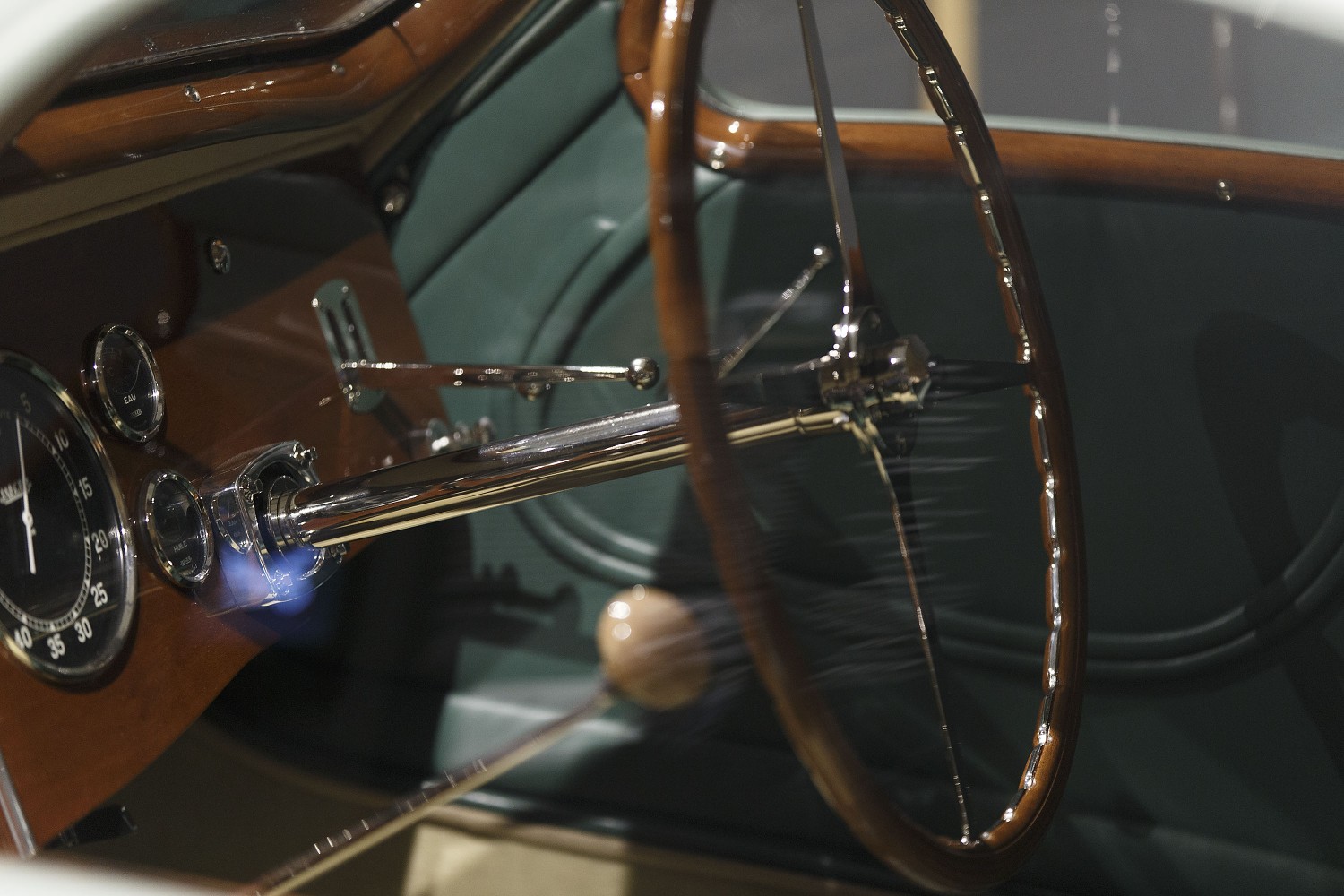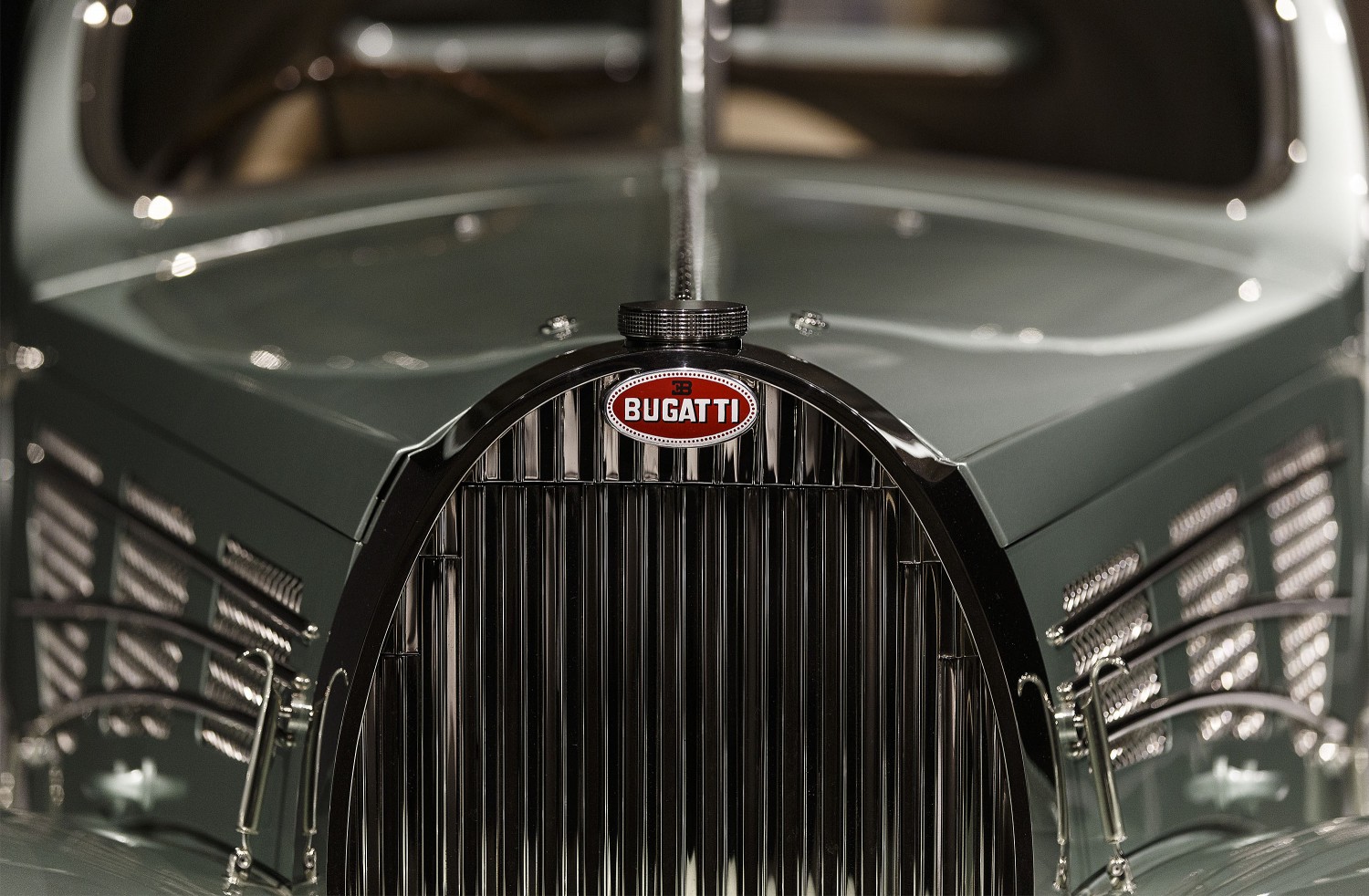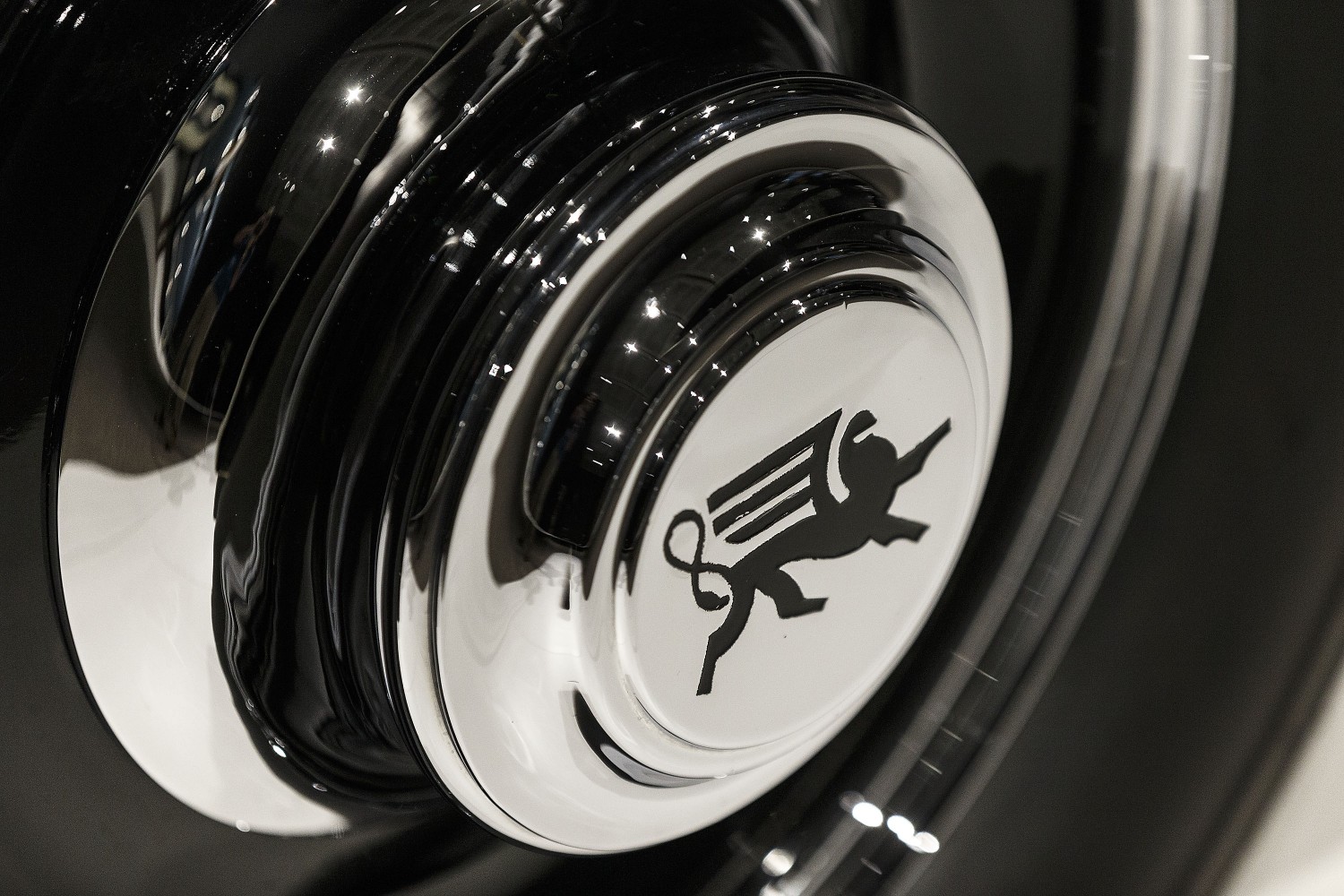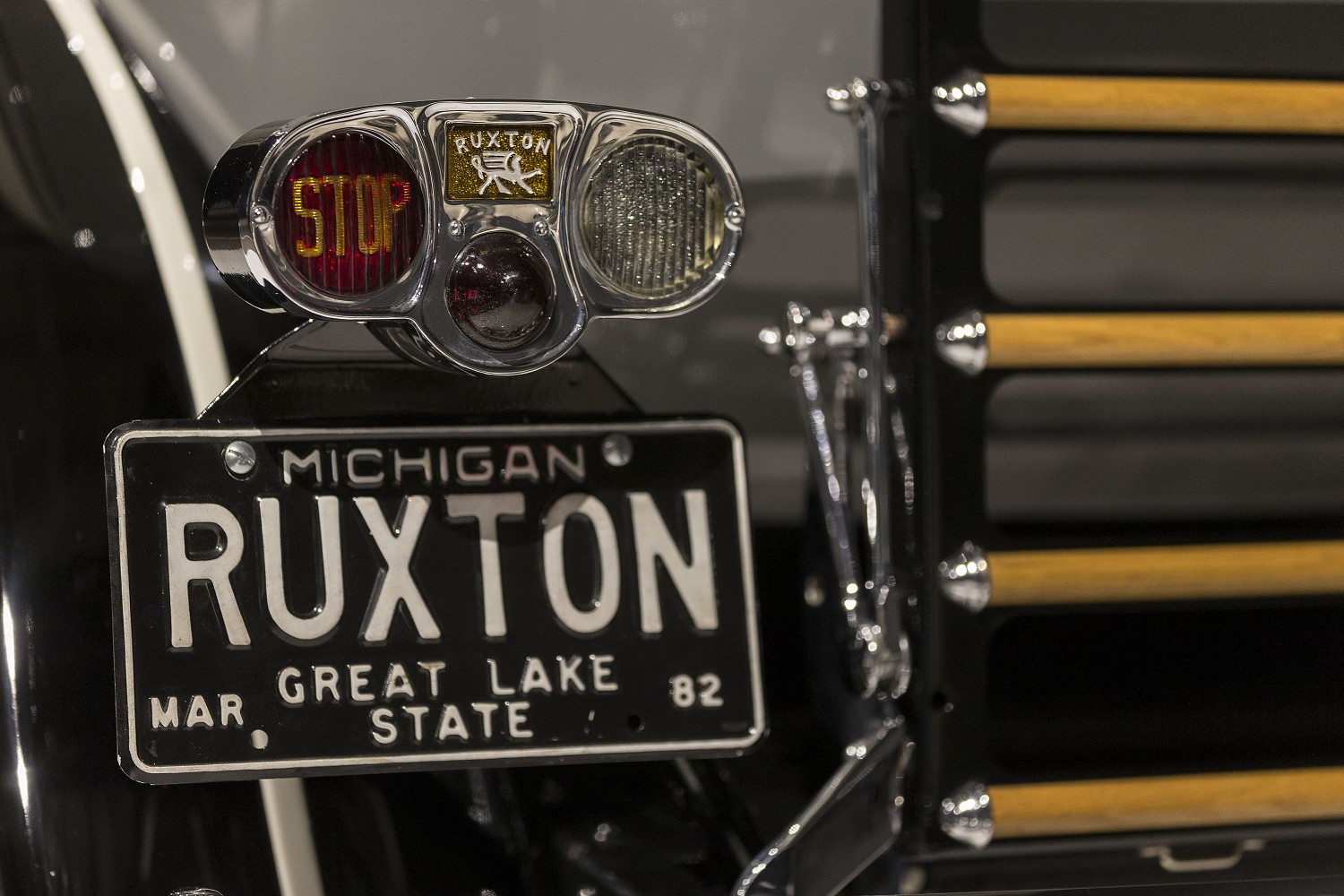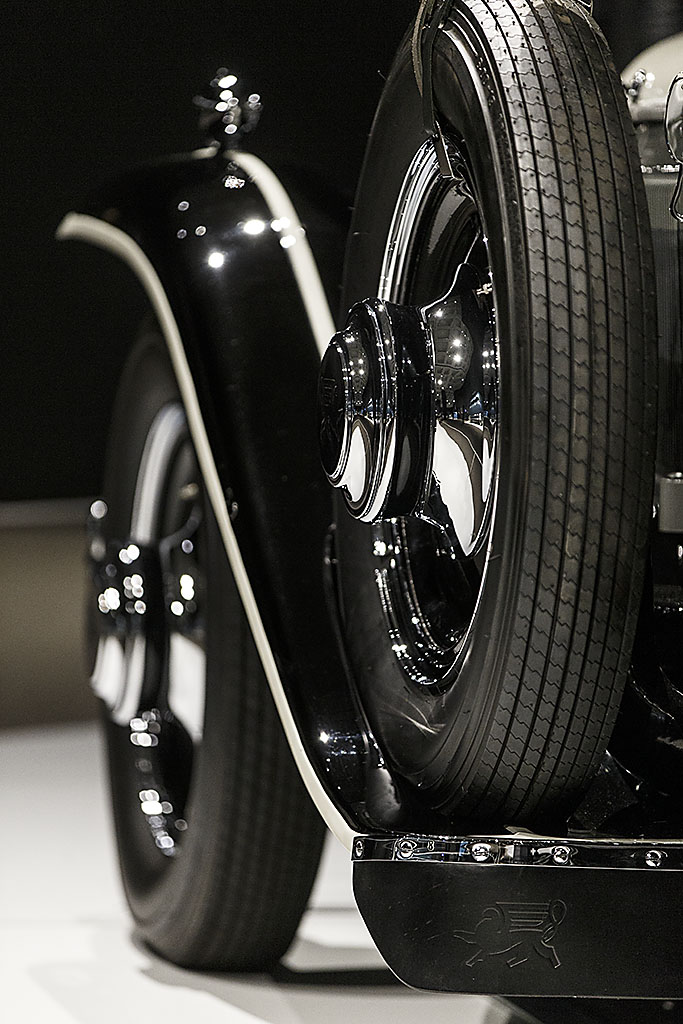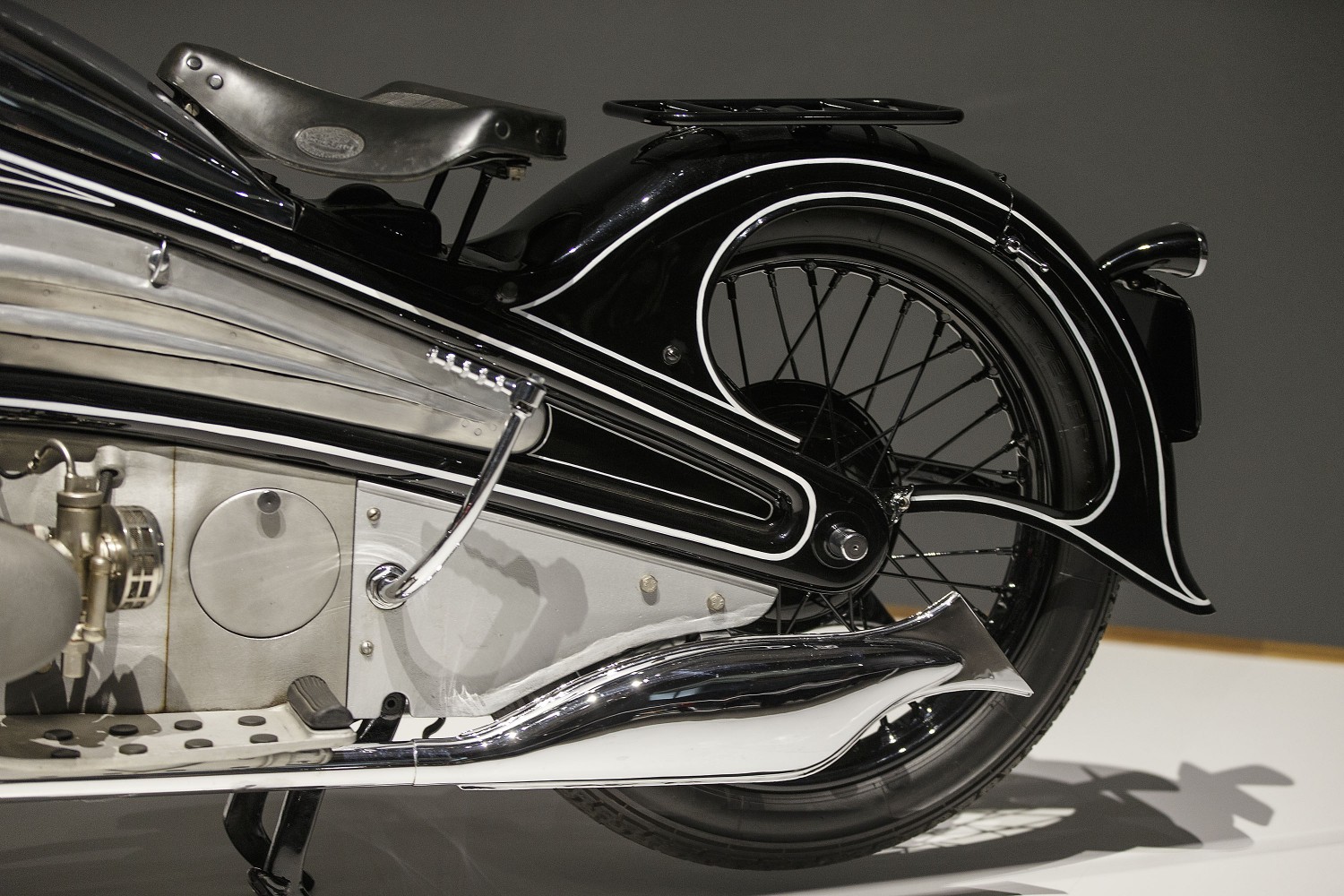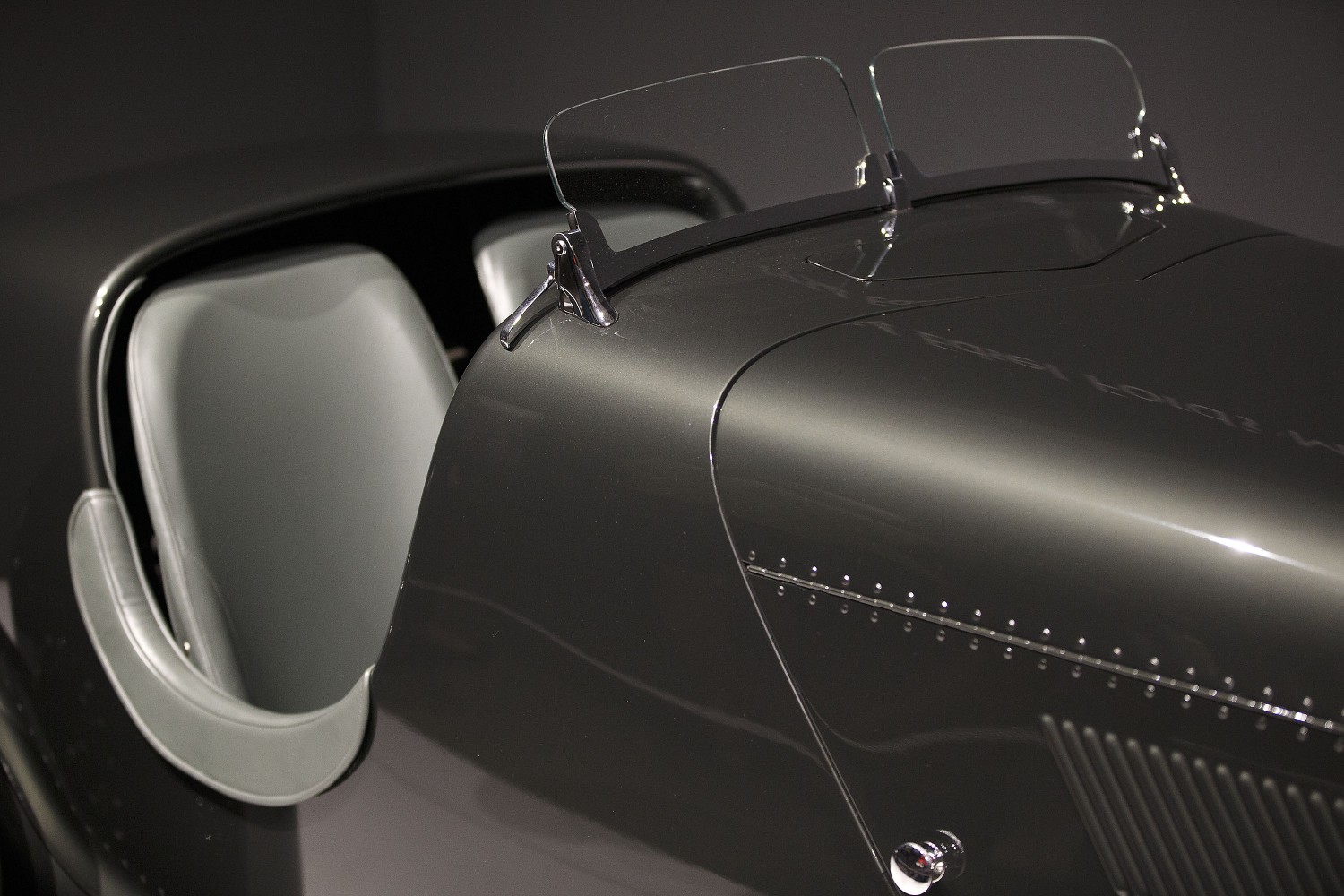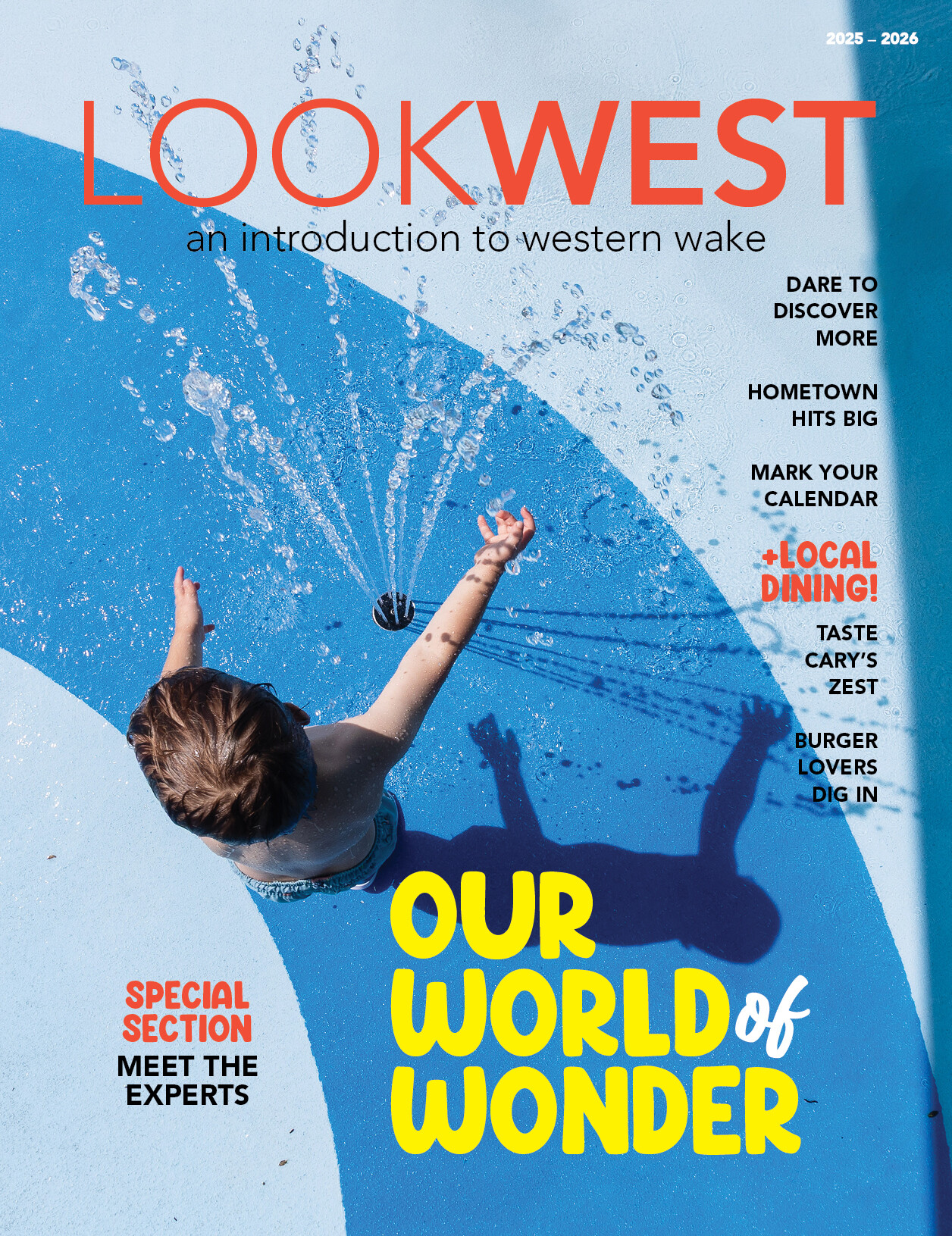Cars with fantastic, celebrity-studded backstories. Cars that resemble airplanes. Cars that offer a glimpse into a shiny, metallic future.
Built in the era of FDR for president, when the Empire State Building was new and Bonnie and Clyde were on a crime spree, these are the cars of dreams.
Welcome to Rolling Sculpture: Art Deco Cars from the 1930s and ’40s, a newly-opened exhibit at the North Carolina Museum of Art.
“In this exhibit, you will see the convergence of industry and the highest expression of Art Deco design,” said Lawrence Wheeler, NCMA director, at a media preview of the exhibition. “You can feel the exceptional nature of these cars.”
Here’s your chance to see one-of-a-kind vehicles such as the red 1941 Chrysler Thunderbolt, with its envelope body and disappearing headlights.
Promoted then as “the car of the future,” with features that were decades ahead of its time, this car was displayed around the country. Roger Willbanks first saw it when he was 5, and finally acquired the car six years ago.
“There were people everywhere, oohing and aahing, and searchlights in the sky,” he said. The first car with a curved glass, one-piece windshield, retractable hardtop roof, and electronically powered push button doors, the car is a study in aerodynamics and streamlining.
“This car helped lift the confidence of America,” said Willbanks, “by showing that it could be produced by an American company.”
Imagination takes the wheel
Other highlights of Rolling Sculpture include a Speedster hand-built for Edsel Ford in 1934 when he was president of Ford Motor Company; one of five surviving Stout Scarabs, a beetle-shaped, Depression-era precursor to the minivan; one of three surviving Pierce-Arrow Silver Arrows; and the BMW R7 Concept motorcycle, hidden in a crate in 1935 and rediscovered in 2007.
The exhibition, guest curated by automotive journalist Ken Gross, runs through Jan. 15, 2017.
“These exquisite cars show what can happen when an automaker’s imagination takes the wheel,” said Gross, who also curated the NCMA’s popular Porsche exhibit in 2013. “There were absolutely no limitations or constraints placed on design, and it shows beautifully. This exhibition is a perfect demonstration of the intersection of art and cars.”
Co-curator Caroline Rocheleau notes that the cars and motorcycles are categorized based on three themes: Art Deco, Streamlining, and Yesterday’s Car of the Future.
“These categories help bring historical and cultural context to the cars and motorcycles featured in the exhibition,” she said. “Many people know a little something about the 1930s but might not be familiar with the era’s automobiles. We hope visitors enjoy learning about the cars’ connection to the art world, their innovative engineering and design, and the reasons these automobiles, hailed as the ‘cars of the future,’ are not seen on the road today.”
Tickets for Rolling Sculpture: Art Deco Cars of the 1930s and ‘40s are $19 for adults, $16 for seniors, military, and college students, and $13 for youth ages 7 to 18. Museum members and children 6 and younger are admitted free, as are college students on Fridays from 5 to 9 p.m., with current ID.
For tickets and more information, including listings of tours, films, lectures, art classes and special events related to Rolling Sculpture, visit ncartmuseum.org.



